Ultimate Vatican Self Guided Tour, Attractions Map and Guide
Vatican self guided walking tour to vatican museum and sistine chapel, using the vatican map, explore at your own pace with this complete vatican self guided walking tour.
In this Vatican City self guided tour use google map to explore the Vatican museum and galleries that make up the Vatican Museum. Then head over to the Sistine Chapel. If you have very little time, (3-4 hours) you may want to explore the Pinacoteca Gallery, the Pio-Clementine Museum, the Candelabra, Tapestry and Map Gallery, the Raphael rooms and the Sistine Chapel.
This post contains affiliate links. That means that I may earn a commission if you make a purchase though one of these links.
If you have less time, concentrate on the Candelabra, Tapestry and Map Gallery, the Raphael rooms and the Sistine Chapel. Most people tend to rush though many of the Vatican museums and make a beeline for the Sistine Chapel and onto to St Peters Basilica however they miss many of the smaller museums located inside the Vatican museum. The Vatican self guided tour is flexible and you can explore at your own pace. Don’t just get caught up and follow the crowd. The number of museums and display items seem overwhelming, take your time to visit the attractions and follow the self guided walking tour to the Vatican attractions.
Click to download an interactive Vatican attractions google map or a PDF map with the Vatican self guided tour

Download the Vatican self guide tour Interactive Map HERE
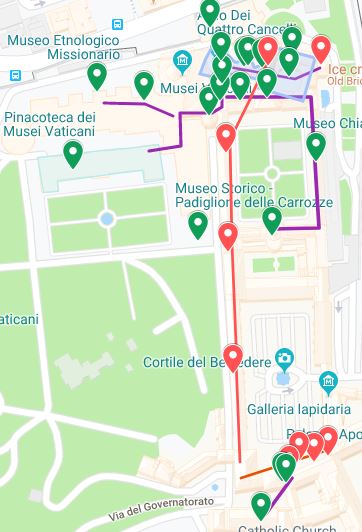
Download the Vatican self guided walking tour PDF Map HERE
Entry tickets.
The lineups can be very long, I recommend you purchase tickets in advance. There are a variety of packages and combinations (with Sistine Chapel and / or St Peters Basilica) that can be purchased online. The best is to purchase a skip the line tickets. Book online here options include combo entrance tickets (some with guided tours), select the one that best suits you. If you want entry tickets and tours of attractions nearby, several options are available here to book in advance.
Vatican Museum Entrance – Musei Vaticani
To start the Vatican City self guided tour, enter the Vatican museum and turn RIGHT instead of left at the top of the last escalator to go to the Vatican Pinacoteca – Gallery of Old Masters Museum at the Vatican Museum. The Vatican visitor crowd will be going left, do not follow them as you will miss the Pinacoteca Gallery.
How to Visit Vatican Museum: self guided walking tour – Main Floor Attractions
1. vatican museum: pinacoteca gallery of paintings.
This is the first stop in the Vatican Self guided tour. The gallery was opened in 1932, it has some of the finest paintings in the Vatican. Most Vatican visitors concentrate on the paintings in the Raphael Rooms or the Sistine Chapel, while the treasures found in the Pinacoteca rooms are largely unseen. The Pinacoteca, Vatican Art Gallery is located on the main floor towards the right of the entrance. It is a real treat for art lovers and missed by many Vatican City tours. It is a long gallery of 18 with rooms on either side separated by a wall. You will start in Room I and move to the end of the gallery to Room 8 (the Raphael Paintings) and then up the gallery towards the exit at Room 18.
This Vatican self guided tour will lead you to each room with an explanation and highlights. If you love paintings of the Old Masters, do not miss this Vatican attraction! Paintings are displayed in chronological order starting in the 12 th century to the 19 th century as you move from room 1 to room VI, note the changes is style. From Room 14 onwards there are various objects and sculptures including those by Bernini. You will also find Byzantine icons.
Room 2 (13 th to 15 th Century)
Of the paintings by Giotto the most famous is the 1313 paining of Stefaneschi triptych which is used as an altarpiece for one of the alters of Old St. Peters Basilica. The middle panel is that of St. Peter on the throne with saints by his side. Cardinal Stefaneschi is kneeling on Peters right offering up the the altarpiece. The back central piece is similar except St Peter is replaced by Christ. Notice the detailing on the miniature altar piece that the cardinal is holding. The left panel is the crucifixion of St Peter and the right panel is the beheading of St. Paul representing the martyrdoms of St Peter and St Paul (They were held in the Mamertine prison in the Roman Forum ).
Tickets to the Roman Forum are Here or reserve a spot on a Guided Tour Here . Guided tours usually include the ticket entrance fee, check to make sure so that you are not paying twice for the entrance to an attraction.
Room 3 (15 th Century)
This room houses paintings by two monks: Fra’Angelico and Fillipo Lippi. Fra Angelico’s painting “Madonna and Child”. Madonna holds a rose while St Catherine and St Dominic kneel beside her. Note the level of gold used in the paintings. As you move to the Raphael rooms the gold leaf painting style is eventually replaced and you will see the use of blue pigments which were used instead of the red and gold signifying a transition in the style of paintings. In 1982 Fra Angelico was beatified by Pope John Paul II.
In Room 3 you will also see Fra Filippo Lippi’s triptych painted in 1460 (note the style difference of the one in room 2 painted by Giotto in 1313). His painting of the Coronation of the Virgin Mary is in the middle panel. The model for the Virgin Mary was a young woman named Lucrezia Buti. He convinced the nuns to allow her to sit for him for the painting. However this led to more than just painting and he eventually abducted her causing quiet a scandal. The nuns, the Church and the powerful Medici family had to intervene to prevent Lucrezia’s family from bringing charges against the monk. They eventually married and she bore him a son. Filippo became a successful painter.
This room has five Raphael paintings including the 13.5 foot high painting titled “ Transfiguration ” and a number of tapestries. The Altar of Transfiguration is in St Peters Basilica . The Raphael paintings were sketched and painted by Raphael, unlike the Raphael paintings in the Raphael room upstairs. The “Transfiguration” was Raphael’s last painting and one of his best works. It is painted in vivid colors showing the Apostles helping a boy suffering from demonic possession in the lower section and the transfiguration of Christ in the upper section. The painting was discovered almost complete in his workshop when he died suddenly at the age of 37. It was carried through the streets of Rome during his funeral procession.
There is also a tapestry of The Last Supper made in a Flemish workshop and based on Leonardo Da Vinci’s painting, The full scale reproduction of the intricate tapestry work is incredible and a must see.
Contains works from Leonardo DaVinci. Pay particular attention to the painting titled “ St Jerome in the Wilderness “. The Altar of St Jerome found is in St Peter’s basilica. It is an unfinished work where you see St Jerome living the life of a hermit in the desert with a lion. He has just removed a thorn from the lion’s paw. You will notice that the Lion is still a sketch and the rest of the painting has a faded ghostly quality about it. That is because the paining is unfinished. The Italian painters, such as Raphael and DaVinci, started with a sketch and then painted over them, however the Venetian painters did not have sketches and painted directly onto the canvas. Sometimes Italian painters prepared the sketch while their apprentices completed the paintings. You will see this in the Raphael Rooms upstairs where many of the paintings were sketched by Raphael but painted by his apprentice.
Works of the master painter Titan and Veronese are placed here such as the Veronese painting “The Vision of St Helena”. St Helena was the mother of Emperor Constantine who was famous for her dream that led to the discovery of the “True Cross” in Jerusalem. The painting is of her sleeping peacefully while a cherub holds the cross in front of her. St Helen’s Statue is found in the St Peter’s Basilica .
There are many realism style paintings from Caravaggio including the “Entombment of Christ” painted in 1603-1604. There are not many of Caravaggio’s paintings in the Vatican Museums. The Entombment has been copied by many French and Flemish painters including Cézanne. Caravaggio paints in a “dark” style called tenebrous, where there is no background, just darkness and therefore focusing strictly on the figures. The painting shows John, Mary of Cleophas, Mary Magdalene and the Virgin Mary removing his body from the cross to place it in the tomb. Note the details and structure of the torso.
The twisted pose of the torso and musculature were highly influential in Renaissance and baroque artists. Note the statue of the “ Belvedere Torso ” when you get to the Pio-Celmentino Museum. This was used by Caravaggio and other masters when sculpting torso’s on their statues, if you look closely at the different torso’s you will find they are modeled on the Belvedere Torso. Interestingly not much is known about Caravaggio’s personal life except information found in public police records. He had minor offences like carry a weapon without permit to serious ones including violent fights. He spent the last few years of his life on the run from police after being found guilty of killing a man over a bet.
A room of sculptures including 7 pieces by Bernini. When you have finished viewing the gallery, continue the Vatican Museum self guided tour by visiting the Momo Staircase and the Ethnological Museum located across from the Pinacoteca Gallery (items 2 and 3 below) or if you are short on time, skip to the Egyptian Museum and the Pio-Clementine Museum (items 4 and 7 below).
2. Momo Staircase, double-helix staircase
There are two staircase in the Vatican museum with the same name. The Momo staircase built in 1505. The staircase is in a rectangular tower and connects the Belvedere Palace to the outside. It is located at the back of the Pio Clementine Museum. Bramante got his inspiration from the Momo staircase. It is an intricate double-helix stairs designed by the architect Giuseppe Momo and was inspired by the original Bramante Staircase (Bramante was the palace architect and many of the designs are attribute to him). Unlike the Momo staircase, the Bramante staircase is open to the public.
The Bramante Staircase is found:
– main floor in the pio clementine museum (momo staircase, also called the bramante staircase. this area may be closed) – upper floor in the gift shop which is right next to the escalator going up do not go down the bramante staircase; it is the exit to the museum and you will not be able to get back in.
The next two stops on the Vatican self guided walking tour are the Ethnological Museum and the Egyptian Museum. These two Vatican Museum attractions are not as popular, however they are definitely worth a visit if you can spare the time. Most tour guides skip these museums. As you exit the Pinacoteca, head back to the entrance of the Pinacoteca Gallery; the Ethnological Museum and the Egyptian Museum are across from the Pinacoteca Gallery.
3. Vatican Museum: Ethnological Museum Misionero Ethnological Museum
A collection of about 100,000 artifacts from non-European religions and cultures around the world including Buddhist, Islam, Hindu, African, Chinese and Native American. As catholic missionaries travelled the world to convert people, they also brought back items of cultural significance that are now displayed in this Vatican attraction. The geographic range of the items displayed is a testament to the reach of the missionaries.
4. Vatican Museum: Egyptian Museum
This Vatican museum opened in 1839 with collection pieces from Egypt are located here. There are many Egyptian antiquities including a brightly painted sarcophagi and mummy box, statues of pharos and queens including one of Rameses II.
General Orientation – From this area you can access the Pine Cone Courtyard (or from the Pio-Celmentine Museum).
if you want to take a break, head out to the Pine Cone Courtyard (Courtille Della Pigna) and explore the area. When you are done come back to this point to continue the Vatican self guided tour. There is another opportunity to visit the Pine Cone courtyard, at item 10 below.
5. Vatican Museum: Museo Chiaramonti
The Museo Chiaramont is the next stop on your Vatican self guided walking tour . It is a passageway (Loggia) that links the Vatican Palaces to the small Belvedere Palace. The Chiaramonti museum is named after the birthplace of Pope Pius VII, Luigi Barnaba Chiaramonti. Built in 1807 and based on the design by Bramante, it is about 300m long. It is a long corridor along the east wall of the Belvedere Museum and houses statues of gods, Roman Patricians and cherubs. You will also find a collection of Roman busts and statues with a variety of expressions, many of which were used in ancestral portraits by the romans. There are about a thousand sculptures, including portraits of Emperors and gods, several fragments, friezes and reliefs of sarcophagi.
6. Vatican Museum: Braccio Nuovo
A room with more Roman statues including one that portrays the Roman Emperor Augustus. This statue was discovered at the villa of Livia Augusta in Pompeii in 1863. The floor is a specular Roman mosaic tiled floor.
The next stop on the Vatican self guided walking tour is the Pio-Clementino Museum. This Vatican attraction is very popular and consists of several rooms.
7. Vatican Museum: Pio-Celmentino Museum Pius and Clementine’s Museum
Named after Pope Clementine XIV and Pope Pius VI, it has the largest collection of Greek and roman sculptures in the world. A very popular Vatican attraction, The museum has 12 rooms and Bramante’s Staircase (listed in no particular order):
– Sala a Croce Greca sarcophagus of Constantia and her daughter -Room of the Animals – Round Room / Sala Rotunda (porphyry basin) – Hall of Muses (Belvedere Torso) – Hall of Animals – Cabinet of Masks (may be closed) – Gallery of Statues – Octagonal Courtyard (Belvedere Apollo, Laocoön and the athlete just before entering the courtyard) – Bramante Staircase (access from Pio-Clementine museum may be closed)
Sala a Croce Greca (sarcophagus of Constantia)
In this hall you will see two Sarcophagai. The first one is the porphyry sarcophagi of Constantia, daughter of Emperor Constantine and the second porphyry is the sarcophagus of St. Helena, mother of the Emperor. It was St. Helena who discovered the true Cross of Christ and brought it to Rome. The Statue of St Helen’s is in St Peters Basilica . A painting depicting this scene is in the Raphael Room 1 Hall Of Constantine titled The Vision of the Cross (east wall) .
Round Room – Sala Rotunda
The room has a lot of unique features including the floor, the dome ceiling and of course the huge red salad bowl as the centerpiece. The well preserved mosaic floor is from a roman villa from the 2 nd century. It is closed off and you cannot walk on it but can admire its intricate details and colorful pattern. The black and white tiles you can walk on are also ancient and authentic. The dome is designed after the pantheon but on a smaller scale.
The ceiling has an oculus and there is a decorative rosette in each of the niches of the dome. The centerpiece is a huge porphyry basin. The reddish-purple porphyry basin gets its name from the word porphyry which is the Greek word for purple, the color of royalty in Rome. Porphyry is an igneous rock and this piece served as Nero’s bath for his golden House (Domus Aurea). The VERY “hard to cut rock” was taken out of a quarry in Egypt and carved into single piece 2000 years ago. This incredibly heavy bathtub was then transported to Rome.
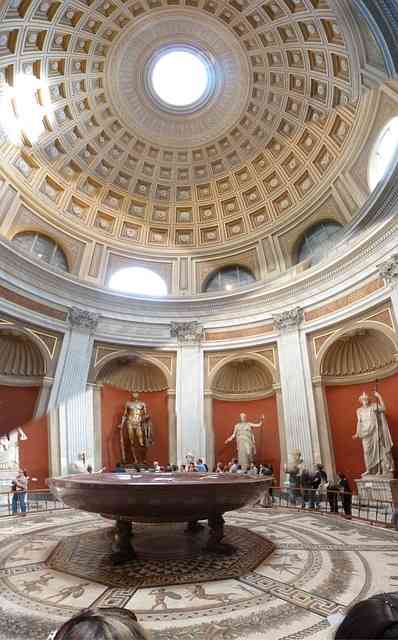
Hall of Muse / Sala della Muse
This was opened in 1784 to display the Villa of Cassius near Tivoli and have been dated to the time of Emperor Hadrian. It is the location of the famous Belvedere Torso by the Sculptor Appolonios from 50 BC. It is famous as the muscles, bones and veins are so lifelike and it was used as a base of the human torso in other paintings. There is speculation that it is the torso of Hercules. Memorize the structure of the twisted torso and look for its replica in the Sistine chapel.
Hall of the Animals
Designed in the time of Pope Pius VI (1775-1799), it displays statues of animals who were considered protagonists with the goal of creating a “stone zoo”. Here you will find many statutes of animals; one of the best ones is the one of the little boy trying to hold onto a goose.
Cabinet of the Masks (Gabinetto delle Maschere)
The mosaic floor of this room is from the Villa Adriana and shows a display of theater masks, this area may be closed.
Gallery of Statues
The gallery of statues was a summer house of Pope Innocent VIII and was converted into a museum by Pope Clement XIV. Here you will also find the bust of Menander (yes the same Menander from the House of Menander in Pompeii ).
8. Vatican Museum: Octagonal Courtyard
Continuing the Vatican self guided walking tour, you will be approaching the Octagonal courtyard. Before entering the octagonal courtyard, you will find the 1st-century statue of Apoxyomenos , the Statue of an Athlete by Lysippos. He is scraping sweat off his body with a strigil, a curved instrument. It is one of the earliest known sculptures showing a figure whose arm is raised and exposing his entire torso. What is also unusual about this statue is that the athlete’s head is smaller than the body. It is 1/8 the size of the body where sculptures of that time were 1/7 the size of the body. Also unusual is the slender figure of the body rather than the musculature torso of other sculptures.
The octagonal shaped hall was the creation of Simonetti and contains 16 columns made from Carrera marble. It holds two important statues; The Statue of Apollo Belvedere and the Statue of Laocoön.
The Apollo Statue
A marble Greek sculpture of the god Apollo is from 1 st century BC. It was found in the 15 th century and moved to Vatican City into the Belvedere Courtyard, hence the name Apollo Belvedere. This was the first piece of the Vatican art collection that started the entire collection. It was also Napoléon’s favorite piece that he took to the Louvre. It was returned to the Vatican after the fall of Napoléon.
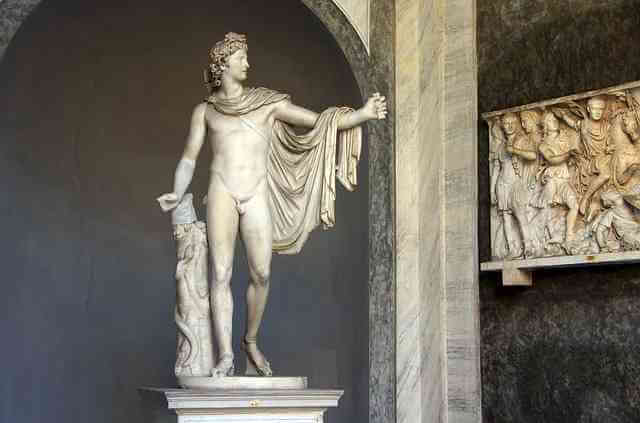
The Laocoön Sculpture
The sculpture from 30 BC was found in the Esquiline Hills of Rome in 1506. Laocoön was a Trojan priest who warned the Trojans not to allow the Trojan horse into the city. They did not listen to his advice and the Greeks leapt out of the horse surprised and killed the Trojans and the capture of Troy. The sculpture is that of Laocoön and his two sons. The sons are being attacked by the serpents. There are many versions of the story surrounding this sculpture; Laocoön was punished for doing something right (in one version) or for doing something wrong (in another version). Whatever the true reason, this is a spectacular sculpture!
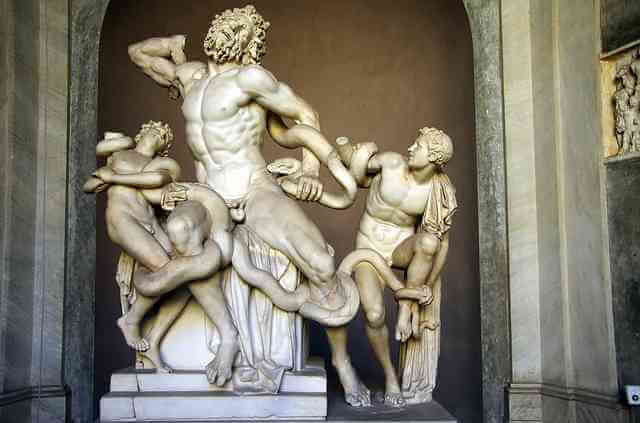
9. Vatican Museum: Bramante Staircase- Scala del Bramante
The original Bramante staircase located in the Pio-Clementine museum was built in 1505 by the Vatican architect Donato Bramante. Its’ purpose was to allow people and animals to access the palace from the outside. As a dual function it allowed Pope Julius II to access the palace in his carriage and avoid walking up and down several flights of stairs. The modern Bramante staircase designed by Giuseppe Momo was built in 1932 and inspired by the original Bramante staircase. Like the original, it is also a double helix spiral and allows people to walk up and down the stairs without meeting each other. The balustrade around the ramp is an ornately decorated metal work. It is located at the end of the museum and visitors leave by this route.
There are two ways to access the staircase:
– from the main floor, it is just off to one corner in the Pio-Clemntino Museum (this access may be closed) – as you go up the escalators, enter the gift shop next to the escalator; the staircase is in the gift shop.
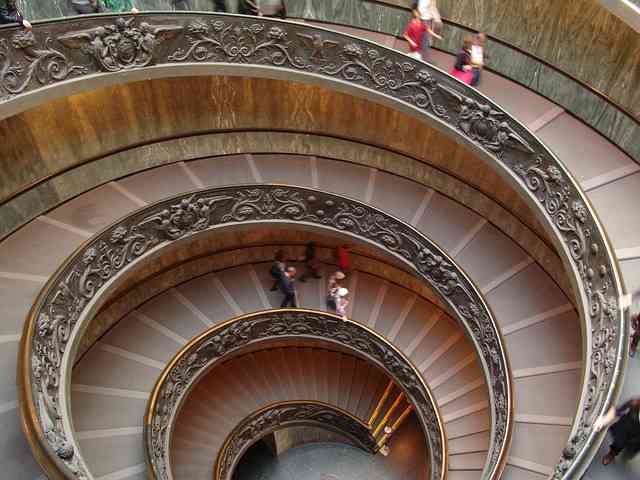
Orientation Pinecone Courtyard: It can be accessed from the Pinacoteca Museum Area or the Pio-Clementine museum or the Egyptian Museum.
10. Vatican City: Pine cone courtyard; Cortile della Pigna
Pine cone courtyard, also called Cortile della Pigna named after the 13 foot high bronze pine cone fountain from the 1 st century BC with water coming out of the top. So why a pine cone? The pine cone represents the pinal gland responsible for light and symbol of the “third eye” the center of enlightenment. It is interesting that a symbol of the third eye is in a prominent spot in the conservative catholic city. The pine cone fountain was discovered near the pantheon and it is speculated that it was part of a pagan temple dedicated to Isis. The two peacocks on either side of the pine cone are copies of the bronze peacocks found on the entrance of Hadrian’s Mausoleum (Castel Sant”Angelo). The originals are in the Braccio Nuovo. The courtyard was designed by Donato Bramante (yes, the same guy who designed the staircase and the first designer of St Peters Basilica Cuppolo). One gets the feeling that the entire Vatican was designed by just a few talented craftsman.
The globe in the center is a modern piece sculpted by Arnaldo Pomodoro, to continue the Vatican City self guided walking tour, re-enter the museum to go upstairs for the Vatican Museum attractions located upstairs.
How to Visit Vatican Museum: Upper floor Attraction
11. vatican museum: etruscan gregorian museum .
Located at the top of the Simonetti staircase, the museum has artifacts from the early iron age to 9 th century BC. The artifacts are from the excavations in the city of Etruria and the Etruscan tombs. There are Roman antiquities, an extensive collection of greek and Italian vases, jewelry and a statue of a hallow bronze warrior from the 5 th century, the Marte di Todi (Mars of Todi).
12. Vatican Museum: Gallery of Candelabra – Galleria dei Candelabri
As you continue to explore the upper floors, the next stop on the Vatican self guided walking tour is the Gallery of Candelabra. This area was originally an open air loggia (long narrow covered space running alongside a building, similar to a porch, open to the street). It was walled in the 18 th century closing off the space and creating a long narrow corridor. It has been subdivided into several rooms separated by arches. The first room is the Gallery of Candelabra, completed in 1888 after 5 years of work. It underwent an extensive restoration and opened in 2016 costing 700K Euros. The room is 262 ft long with eight candelabras of white marble and marble columns dividing the area into six sections, displaying Roman antique sculptures and a richly painted ceiling.
13. Vatican Museum: Gallery of the Tapestries – Gallery delgi Tapestries
This was one of my favourite displays. It was really crowded even though we took a private tour before the museum opened to the public. The Vatican self guided walking tour allows you to explore at your own pace, take your time in this gallery as there are many intricate pieces with complicated designs. The tapestry hall is divided by both time and regions. The right side of the wall are mostly pieces made in the 17 th century and showcase scenes from the life of Pope Urban VIII, the pope at that time.
The tapestries were designed by students of Raphael and woven elsewhere. It took years to make them and they were woven from using the finest wools, silk, gold or silver threads made by the most talented weavers who were found in Flanders or Belgium.There are some amazing tapestries on the left wall. There are tapestries from the 1500’s which were woven in Brussels by Pieter van Aelst’s school. There are tapestries based on drawings by Raphael’s pupils depicting the life of Christ starting from his birth in the manger to the Resurrection tapestry.
The tapestry of the “Resurrection of Christ” is an excellent example of moving perspective; as you move past the tapestry the eyes of Christ will follow you. This is similar to the technique found in the Mona Lisa painting but is much more difficult to duplicate in a tapestry and shows the talent of the craftsman involved in the production of these tapestries. A fabulous Vatican attraction, I spent some time here trying to see if the eyes would follow me!
14. Vatican Museum: Gallery of the Maps – Galleria delle Carte Geoprafiche
The ceiling is the second most photographed ceiling in the museum, the Sistine chapel being the most photographed ceiling (even though taking picture in the Sistine Chapel is not allowed, somehow it happens!). The largest collection of geographical paintings are housed in the 120 meter long Gallery of maps. Commissioned in the 16 th century, there are 40 geographically accurate maps of Italy and its provinces. Based on the three year work of the 15 th century monk Ignazio Dante, the maps contain details such as boats and sea creatures.
15. Vatican Museum: Museum of the Carriages – Museo Storico – Padiglione delle Carrozze
Created in 1973 by Pope Paul VI, it is an immense area under the Square Garden. It houses sedan chairs, carriages, cars, the popemobile and other transportation used by the various popes. Busts of bronze and marble are displayed next to their specific mode of transport. Of particular interest are the enclosed sedan chairs with four poles held by porters that was used to transport the pope before carriages and cars were invented.
The next stop on the Vatican self guided walking tour are the Raphael Rooms.
16. Raphael Rooms
Pope Julius II (1503-1513) refused to live in the Borgia apartments and wanted to distance himself from former Pope Alexander VI. He hired a 22 year old artist named Raphael from Umbria to paint his private apartments located above the Borgia apartments. This created an uproar as Raphael was largely unknown however the Pope really liked his work and entrusted him with the task. The numerical rooms are not in chronological order and Raphael started his masterpiece in Room 3 in 1508AD.
Raphael Room 1 Hall Of Constantine
This room is named after Emperor Constantine (306-337 AD) who embraced Christianity and allowed for freedom of religion within his Empire. The walls depict the lives of the Emperor where Raphael started work on this room and sketched the paintings. However the work was completed/painted by his apprentices after Raphael’s untimely death. The Statue of St Helene is found in St. Peters Basilica.
The Donation of Constantine (north wall)
- Constantine kneels before Pope Sylvester, who has the face of Pope Clement VII in a tribute to Clement the VII for the continued support of the Raphael rooms. In this painting the emperor donates Rome to the pope.
The Baptism of Constantine (west wall)
- After he wins the battle with Maxentius, the emperor kneels naked before Pope Sylvester (who has the face of Pope Clement VII) for his baptism .
The Vision of the Cross (east wall)
- Refers to the vision Constantine had before his battle with Maxentius who wanted the throne. Constantine had a vision that he would win the battle as long as he used the cross as his symbol. His mother, St Helena had a vision that indicated where Christ’s cross was to be found. She was instrumental in bringing the cross to Rome based on this vision.
The Battle of Milvian Bridge (south wall)
- The battle with Maxentius takes place of the Milvian Bridge where Maxentius loses and is drowned in the Tiber river while Constantine rides away victoriously on his white horse.
Raphael Room 2 Hall Of Heliodorus (1512-1514)
The themes is political in nature documenting important religious moments in history from the Old Testament to medieval history centered around the protection of god over the church.
Deliverance of Saint Peter (north wall)
- An angel saving St Peter from prison, unshackling him while the guards fall into a deep sleep. The face of St. Peter is Pope Julius II face as Raphael wanted to pay tribute to the pope. A scene depicting St Peter’s baptism of the prison guards is found in St Peter’s Basilica.
The Meeting of Leo the Great and Attila (west wall)
- Attila the Hun reaches Rome to complete the invasion of the Roman Empire. He is met by Pope Leo. During the meeting St Paul and St Peter appear armed with swords resulting in Attila not invading Rome. An Altar to Leo the Great is in St Peters Basilica.
The Expulsion of Heliodorus from the Temple (east wall)
- God sends angels who in turn get two youths and a horseman to banish Heliodorus for attempting to steal treasure meant for the temple of Jerusalem.
The Mass at Bolsena (south wall)
- The Christian faith being doubted by many including a priest in 1263 who doubted that the bread and wine offered at mass could be transformed into the body and blood of Christ. In this scene a white linen cloth on the alter became stained with blood.
Raphael Room 3 Room of the Segnatura (1508-1511)
Started at the same time as the ceiling of the Sistine chapel by Michelangelo in 1508. The Stanza della Segnatura was the private study of Pope Julius II. The della segnatura is the room where the pope signed the verdicts of the segnatura, the church’s tribunal. This was the only room Raphael completed on his own as he become distracted by his other work such as the work at St Peters Basilica. All the other rooms were completed with the help of his apprentices. Each wall has paintings along the four themes of: Theology, Philosophy, Justice and Poetry representing the concept of Truth, Good and Beauty. This room is well known for the painting of the School of Athens, its most famous fresco.
The Parnassus (north wall)
- Along the themes of poetry and beauty. The painting shows the view from the Vatican of the Parnassus, the mythological home of Apollo. Apollo is seated in the center on Mount Parnassus surrounded by 9 muses on either side of Apollo who are the protectors of arts, poetry and music. Homer, Virgil and Dante are painted at his shoulder.
Disputation of the Holy Sacrament (west wall)
- Painted on the theme of theology, it was Raphael’s first work. The image of the Trinity is surrounded by saints and prophets sitting on a bench of clouds. Below the image are the faces of famous theologists who were hanged or burned including Dante and Fra Angelico. It is an image of the church that spans both heaven and earth.
The School of Athens (east wall)
- Represents philosophy and is one of his most famous paintings in the Raphael rooms.
- The School of Athens receives a lot of attention (Philosophy) as he painted his friends into the paintings. You will find Plato standing in the center in an orange robe, and Aristotle (in the blue robe) talking to him and on his right. Plato’s face is that of Leonardo Da Vinci. You will see Pythagoras in the very front left in a light pink robe with a book in his hand. Euclid on the right (in the red robe) is drawing on the chalkboard however he has the face of Bramante. You will see Raphael behind the pillar on the bottom right corner looking out at us (in a black hat and black robe) and finally he put Michelangelo front and center. On the left hand side with his head in his arms is the Greek philosopher Heraclitus, however his face is that of Michelangelo.
The Cardinal Virtues (south wall)
- The three cardinal of virtues are personified by the three women in the painting. The virtue of Fortitude (seated on the left holding branch), Prudence (center) and the virtue of Temperance (right). The painting also represents the three Theological Virtues of Faith, Hope and Charity are that are personified by the cupids. The fourth virtue of Justice is on the ceiling.
Raphael Room 4 – Room of Fire in the Borgo (1514-1517)
The painting started during the term of Pope Leo X (and his namesake predecessors Leo III and Leo IV) and shows the political journey of the Pope (1514-1521). It was used as a place for music and dining. The work was the third and last room Raphael worked on and was completed by his apprentices.
The Oath of Leo III (north wall)
- Pope Leo the III is on trial as a result of accusation of misconduct by the nephew of his predecessor Pope Hadrian I. The pope confirms that he is responsible for his actions to god alone.
The Coronation of Charlemagne (west wall)
- The coronation of Charlemagne on Christmas Eve 800 in the St Peters Basilica. The emporer has the face of the Emperor of France and the Pope has the face of Leo X, attesting to the agreement between the Holy See and France in 1515. The round marble stone slab upon which Charlemagne kneeled during his coronation is on the floor of St Peters Basilica. Charlemagne’s Statue is also found in St Peters Basilica .
The Battle of Ostia (east wall)
- The papal armies defeat the Saracens at the mouth of the Tiber River in 849.
Fire in the Borgo (south wall)
- Personally painted by Raphael, the Pope IV is making the sign of the cross from his balcony to miraculously extinguish the fire burning in the Borgo district of Rome.
17. Vatican City: Capella Niccolina Nicola Chapel
This stop in the Vatican self guide tour may not be accessible. The chapel is not on the Vatican map and may be closed. After complete the tour of the Raphael rooms, go to the Sala dei Chiaroscuro (Room of the Chiaroscuri), located in the same area (the Apostolic Palace). The Chiaroscuri room has been used to house parrots, those entrusted with surveillance of the Pope, those responsible for carrying his sedan chair, and as a secret meeting room. It has a 16 th century wooden ceiling and a small doorway in the corner. Enter the doorway to access Chapel of Nicholas V (1447-1449). It may be closed off with a bar.
Chapel of Nicholas V is a tiny chapel with frescoes by Fra’Angelico. This was the private area for Pope Nicholas to pray. It is covered in gold paintings featuring Chritian Martyrs such as St. Peter, St. Laurence and St. Stephen. Much of the gold used here was brought back by Christopher Columbus when he returned from his voyages.
18. Vatican City: Borgia Apartments
The Borgia apartments in the Vatican self guided tour consist of several rooms and are a popular Vatican attraction. The apartments are a series of 6 rooms that were converted into a private apartment for Pope Alexander VI, Rodrigo de Borgia and his family. He commissioned Bernadino de Betto de Baigio (known as Pintoricchio) to paint the apartment with frescoes between 1492 and 1495. The frescoes depict religious themes centered on the martyrdom of saints, mysteries of faith and the medieval themes of Trivium and Quadrivium.
The paintings show the Spanish roots of his family from the Spanish mosaic tiles on the floor to the Borgia family symbol, the bull, painted on almost every wall. The entire apartment shows the pride the pope felt towards his Spanish origins and his family name. The most famous fresco in the rooms is “The Disputation of Catherine” which features the images of the Borgia family and St Catherine is said be the image of the pope’s daughter Lucrezia Borgia. The painting is centered around the Arch of Constantine which has the Borgia Bull centered atop it.
Room of the Sibyls
This is the first of the 6 rooms. The ceiling has an astronomy theme with seven planets on a blue background. The bull was the Borgia’s coat of arms. There are 12 lunettes with sibyls (female oracles) and prophets with banners depicting their prophesy.
Room of the Creed
The ceiling has a complex geometrical pattern. Once again there are 12 lunettes but this time with apostles and prophets with banners that have quotes from the scriptures.
Room of Liberal Arts
This is the personal library of the pope. He ceiling is a double barrel vault which is divided by arches. There are motifs are of justice in both biblical and classical examples. There are 7 lunettes divided into three or four. Both Cicero and Bramante can be seen on the throne.
Room of the Saints
Once again the ceiling is divided into vaults with an arch in the middle. The theme is of divine justice and features the Egyptian mythical gods Isis and Osiris. The lunettes depict stories from the lives of the saints.
The next stop on the Vatican self guided tour is the Sistine Chapel.
19. Sistine Chapel
Original sistine chapel.
This is the last stop on the Vatican self guided tour . Take your time exploring the ceiling and wall frescos. There is an immense amount of detail to absorb. I found the fresco of the day of judgement both fascinating and frightening.
The Sistine Chapel is named after the Pope Sixtus IV who commissioned it as a simple palace chapel that would hold the conclave where the college of cardinals meet to elect a new pope. The chapel is on the exact spot of the Great Chapel and was designed by Giovannino De’Dolci. It was to have the the same dimensions as the Solomon Temple that was destroyed in 70 AD at about forty meters long, 13 meters wide and 20 meters high (seven stories)
Pope Sixtus’s vision for the walls of the chapel were to depict scenes of Moses guiding his people out of Jerusalem and other stories from the bible painted by Perugino, Botticelli and Signorelli. The ceiling was painted a simply blue sky with gold stars and the floor was geometric patterns of multicolored mosaic tiles. The floor is the same that you see today
Sistine Chapel Restoration
After completion of the Sistine Chapel, the excavation of the new St Peters Basilica began next door. It caused a huge crack in the ceiling and the frescoes also suffered damage. Bramante had to reinforce the ceiling. The pope at the time, Julius II was left with the task of restoring the Sistine Chapel. Bramante suggested Michelangelo, a well-known, cantankerous, poverty stricken sculptor who was a rival of Bramante for the restoration work.
Bramante felt sure that Michelangelo would turn it down as he was busy on the tomb of Julius II and he thought that Michelangelo would fail as he was a sculptor and not a painter. Bramante preferred Raphael who was a friend and a relative and felt that Michelangelo’s failure would lead to the hiring of Raphael.
Michelangelo was humiliated at being asked to paint a ceiling and that he considered himself a sculptor and not a painter. He eventually conceded when the pope offered him free reign and accepted the pope’s challenge of transforming what Michelangelo considered “the roof of a barn” into a Vatican jewel.
Michelangelo
Since the walls already had paintings of Moses (left wall) and Jesus (right wall), Michelangelo decided to tell the story of the creation of man. He painted the ceiling and the altar wall. The work was started in 1508, the same year as the Raphael’s salle della segnatura room. Contrary to popular belief, Michelangelo did not paint the ceiling lying down on his back. Originally Bramante built him a scaffold that Michelangelo considered flawed. Upon protest (all the way to the pope), Michelangelo designed his own scaffold and painted the ceiling in a standing position.
He originally worked with assistance, however fired them all as he was not much of a team player. Michelangelo locked himself in the chapel for four years rarely, letting anyone in and working in solitude all the time complaining about his back, his neck and paint dripping into his eyes. The work was completed in October 1512 and the unveiling overshadowed the walls of Jesus and Moses.
In 1536, about 20 years later, Pope Clement VII called upon Michelangelo again to paint a giant fresco, “The last Judgment” behind the altar. In his 60’s now, it took Michelangelo 5 years to paint it from 1536-1541.
Sistine Chapel Ceiling
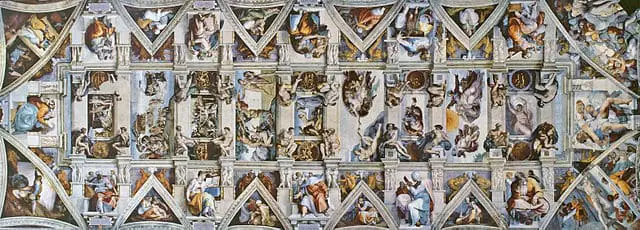
Sistine Chapel Middle Section of ceiling
The most popular and splendid Vatican attraction. The middle panel of the ceiling are frescoes of nine stories from the Book of Genesis; there are six panels on the stories of Creation and the last three panels depict stories of Noah. The first three panels of Creation represent the six days that God created Earth, resting on the seventh day. The net three panels are taken from the story of Adam and Eve. The creation of Adam shows god reaching out to touch Adam with the spark of light and it is a famous scene The next three panels concern Noah and include the sacrifice made by Noah’s family, being saved from the Great Flood, Noah growing vines and in the process gets drunk and accidently exposes himself.
Sistine Chapel: There were 12 prophets and sibyls Prophetic women
There are four Major Prophets and three Minor Prophets. Though minor, these prophets must have had a significant effect. The five Sibyls were prophetic women who resided at shrines or temples. The five depicted here were said to have prophesized the birth of Christ.
- Jonah (above the altar), Prophet of the Northern Kingdom. Book of Jonah
- Jeremiah, major prophet in the Hebrew Bible, Book of Jeremiah
- Persian Sibyl, also known as Babylonian
- Ezekiel, a Hebrew prophet, Book of Ezekiel, Ezekiel means “God’s Strength”
- Erythraean Sibyl, a prophetess of classical antiquity
- Joel, a minor Prophet of ancient Israel
- Zechariah (above the main door of the chapel), a minor prophet, Book of Zechariah
- Delphic Sibyl, an oracle and priestess of Apollo
- Isaiah, a Jewish prophet from the 8 th century, Book of Isaiah
- Cumaean Sibyl, an Oracle of Apollo
- Daniel, meaning “God is my Judge”, Book of Daniel
- Libyan Sibyl, prophetic priestess of the Oracle of Zeus-Ammon
- The Ancestry of Jesus – Shows Jesus physical male lineage through his father Joseph, from the time of Abraham as per the Gospel of Mathew
Sistine Chapel Walls
The Walls: I have included the names of the paintings in the walls in the event you want to look them up for their history:
Sistine Chapel Southern Walls 1481–1482:
Stories of moses, s tarting from the altar:.
- Moses Leaving to Egypt painted by Pietro Perugino and assistants
- The Trials of Moses painted by Sandro Botticelli and his assistants
- The Crossing of the Red Sea
- Descent from Mount Sinai
- Punishment of the Rebels by pained by Sandro Botticelli
- Testament and Death of Moses
Sistine Chapel Northern Walls, 1481–1482
Stories of jersus :.
- Baptism of Christ painted by Pietro Perugino and assistants
- Temptation of Christ painted by Sandro Botticelli
- Vocation of the Apostles painted by Domenico Ghirlandaio
- The Sermon on the Mount ,
- The Delivery of the Keys painted by Pietro Perugino
- The Last Supper painted by Cosimo Rosselli
Sistine Chapel Eastern wall
Resurrection of christ.
- Resurrection of Christ painted by Hendrick van den Broeck (1572) over Domenico Ghirlandaio’s original painting
- Disputation over Moses’ Body painted by Matteo da Lecce (1574) over Luca Signorelli’s original painting
Sistine Chapel The Last Judgment (1536-1541)
The last judgment as described in the book of John, chapter 20. It shows the second coming of Christ who is judging mankind. Christ is high on the wall and surrounded by saints. At the base of the painting are the dead who arise from their graves ready to be judged. The damned are on the left being dragged down to hell and the blessed who are heading to heaven are on the right. There was great controversy around the figures as many of them were nudes especially by the pope’s Master of Ceremonies, Cesena. In response Michelangelo painted Cesenas’ face on Minos, the Judge of the underworld. When Cesena protested to the pope, the pope is to have said that he does not have influence over hell. Eventually a cloth was painted partially covering the nudes by another painter.
20. Michelangelo wrote a poem describing his work at the Sistine chapel:
I’ve grown a goitre by dwelling in this den– As cats from stagnant streams in Lombardy, Or in what other land they hap to be– Which drives the belly close beneath the chin: My beard turns up to heaven; my nape falls in, Fixed on my spine: my breast-bone visibly Grows like a harp: a rich embroidery Bedews my face from brush-drops thick and thin. My loins into my paunch like levers grind: My buttock like a crupper bears my weight; My feet unguided wander to and fro; In front my skin grows loose and long; behind, By bending it becomes more taut and strait; Crosswise I strain me like a Syrian bow: Whence false and quaint, I know, Must be the fruit of squinting brain and eye; For ill can aim the gun that bends awry. Come then, Giovanni, try To succour my dead pictures and my fame; Since foul I fare and painting is my shame. Unhappy and miserable, Michelangelo produced one of the greatest works of art!!
Day Trips from Rome
- Visit the other sites in Italy including Pompeii, Mt Vesuvius, the Amalfi Coast and Hadrian’s Villa. Book your day trip to explore attractions outside of central Rome. Book your Day Trip Here.
Guided Tours
Guided tours with local guides are booked HERE . Options for tours include combination tours with the Vatican Museum, Sistine Chapel and St. Peter’s Basilica. You can also purchase tickets, without the guided tours, to the various attractions. Some options include explorer pass where you can choose several attractions, or unlimited 24 hour tickets, or the City Card. The lineups to purchase tickets can be long, once tickets are purchased you then have to wait in another line to enter the attractions. We always bought tickets in advance online and often times bought the skip the line tickets. Purchase your online tickets in advance here .
Hop On Hop Off Tours
The hop-on-hop-off is a great option if you are short on time or do not want to worry about transportation to the different attractions. Purchase your hop-on-hop-off online here, various options are available.
Other Attractions in Italy
- Visit the Roman Colosseum. Click on the Roman Colosseum attractions map HERE and accompanying Colosseum attractions guide HERE
- Take the Rome attractions map and self guided tour: It includes the Vatican City attractions map HERE and the Vatican attractions guide HERE
- Self Guided Walking tour to explore the neighborhood of Trastevere with map of attractions HERE and guide of attractions HERE
- Visit St Peters Basilica . Explore all the attractions in St Peter’s Basilica with the attractions guide HERE
- One of my favorite places is the Roman Forum and Palatine Hill . The map of attractions is HERE and the self guided walking tour is HERE
- Visit Pompeii with a complete self guided tour map HERE and the attractions guide to the 49 points of interest HERE
- Spend the day in Florence , this was by far one of my best day trips. The self guided walking tour map is HERE and the attractions guide is HERE
Related Posts

Flight delay compensation, claim up to €600 in cash
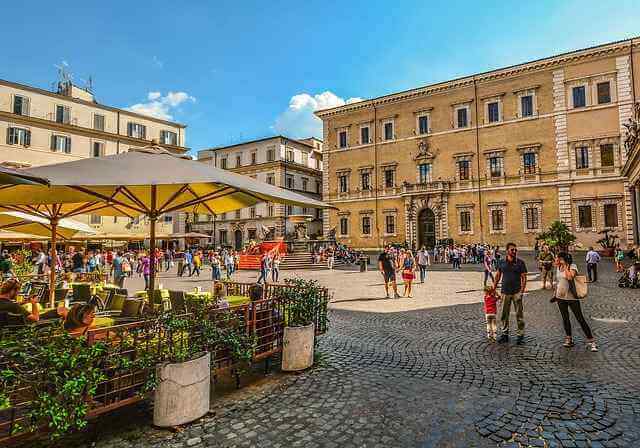
Delightful Trastevere, Self Guided Walking Tour of Trastevere Rome
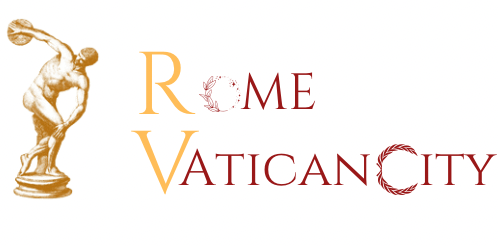
- Your cart is empty
- Vatican City
Self Guided Tour to the Vatican Museums & Sistine Chapel
from 1 review
English, Espanol, Francais, German, Italiano
Whether you’re looking for a way to keep your kids occupied or simply want to get your culture fix in a safe environment, begin your journey by reserving a ticket with us; enjoy a tour of the Vatican’s most popular attractions, including museums, the Sistine Chapel, and more. Fortunately, there are a plethora of museum, theme park, and garden excursions to choose from at any time. Our skip-the-line tickets provide you the opportunity to enter Rome’s enormous attractions with ease. Never experience the agony of standing in line again. Skip the lines and enter the Vatican ahead of the rest of the world.
- Get quick with priority access and bypass the ticket queue to make your way to the intriguing Vatican Museums.
- Explore the Pinecone Courtyard, Pio Clementino Museum, Chandelier’s Gallery, Tapestries Gallery, Raphael’s Rooms, and many more!
- With these online fast-track tickets from ROMEVATICANCITY, you need not worry about the any long queues and also you will be given guaranteed access to areas promised.
- You will also get the wonderful chance to glance at the breathtaking murals that adorn the walls of the world-famous Sistine Chapel.
Meeting Point
Join us at the meeting point sent via email
Vatican Museum
The Vatican Museums is a Christian museum located within Vatican City. They showcase works from a vast collection that the Pope has collected over the centuries, including some of the world's most famous Roman sculptures and some of the most important masterpieces of Renaissance art. The museum has approximately 70,000 works, of which 20,000 are on display and currently employ 640 people in 40 different management, science and restoration departments.
Sistine Chapel
Vatican museum sistine chapel tickets.
Enjoy Michelangelo's frescoes and perhaps the famous Sistine Chapel, home to the creation of Adam and the Last Judgement.
Included/Excluded
- Skip-the-line tickets to the Vatican Museums
- Skip-the-line tickets to the Sistine Chapel Free Wifi Accomodating friendly staff
- 24/7 Customer Service
- Entry and Tickets to St Peter's Basilica
- Guided tour / Audioguide
- Pick up / Drop off
- Food and Beverages
Important Information
Tour's location.
Amazing Experience
Write a review, leave a review cancel reply.
Your email address will not be published. Required fields are marked *
Organized by
Neeraja Palani
Member Since 2023
Information Contact
You might also like
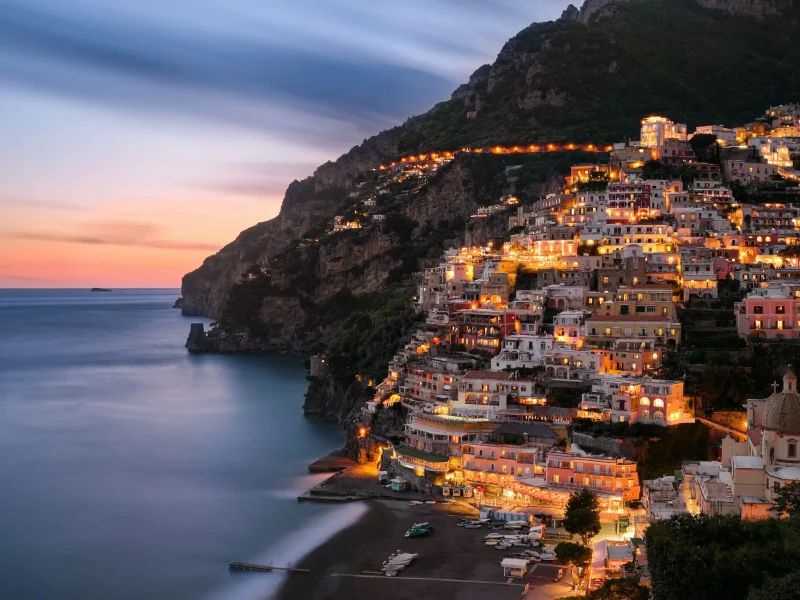
Amalfi Coast, Pompeii and Positano Tour from Rome
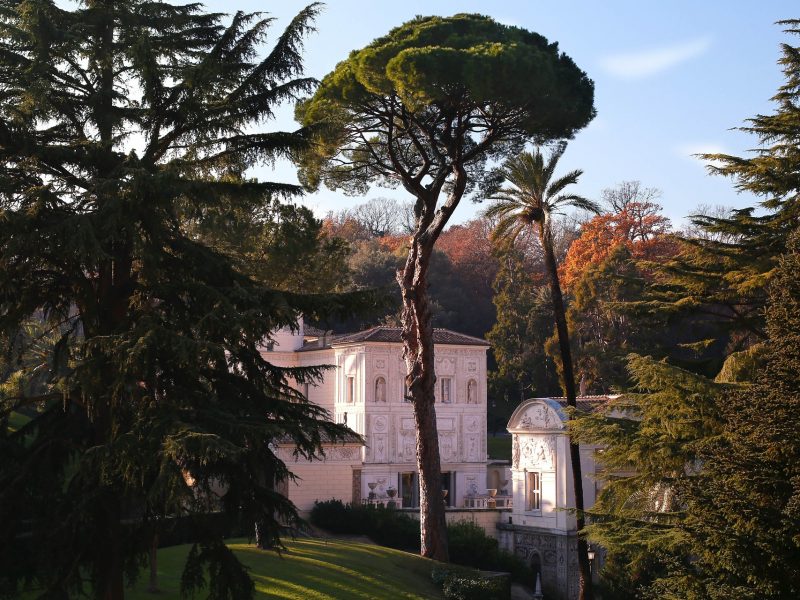
Exclusive Pope’s Summer Residence Tour – Castel Gandolfo with Lunch
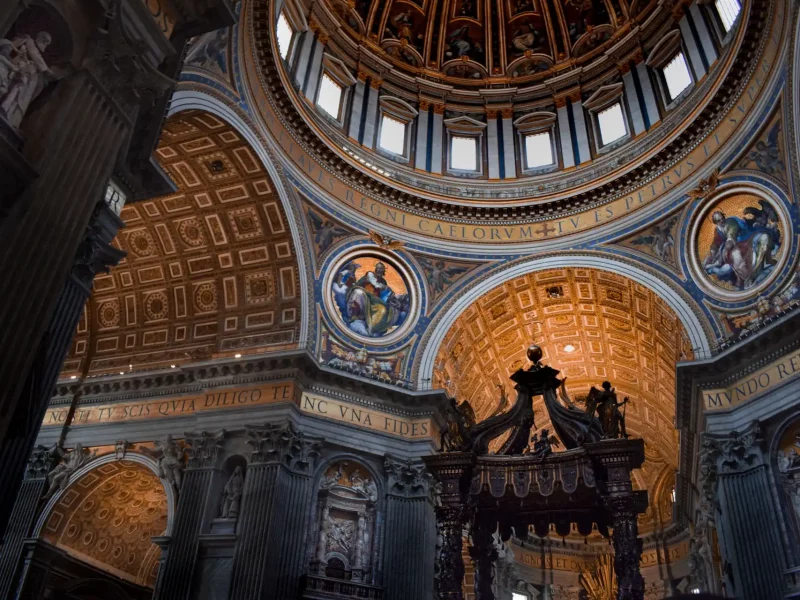
Vatican Private Tour
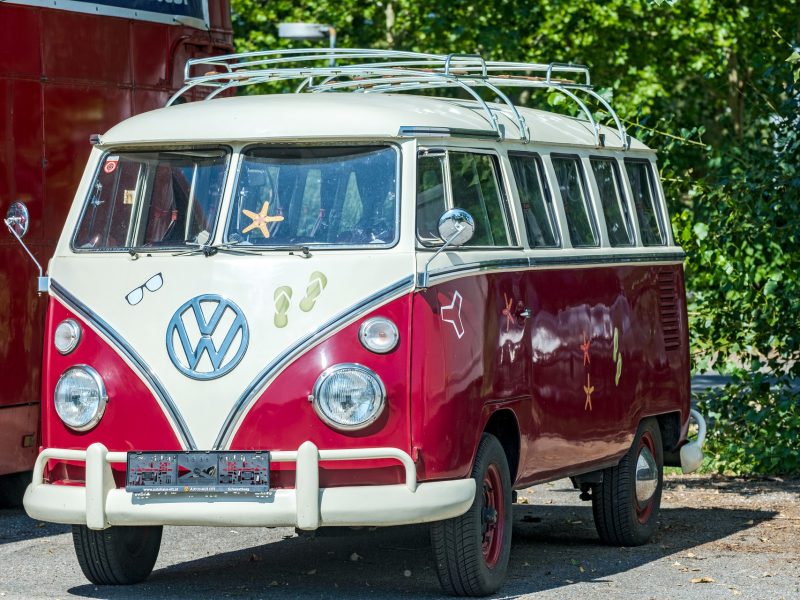
Shuttle Service from Rome to Pompeii
Select User Type
Enter the e-mail address associated with the account. We'll e-mail a link to reset your password.
Privacy Overview
This website uses cookies to improve your browsing experience and analyze the use of the website. Learn More

Vatican Self-Guided Tour

This post is a self-guided tour of Vatican City and covers what to see along with descriptions, which attractions require tickets, hours, directions and other information you plan your visit.
As professional tour guides, we're always making stops near Vatican City and offering helpful advice to our guests about visiting.
While some people choose to take tours, some prefer to go on their own and move at their own pace which is why we wrote this post using our guides' first-hand experiences.
At the bottom of this post are some thoughts about Vatican City from both locals and travelers to give you an idea of what your visit will be like.
PLAN YOUR VISIT
Below you will find answers to the most commonly asked questions.
You can also read our in-depth post on Vatican City for other useful information to help you plan for your visit.
Can you enter Vatican City for free?
It is free to enter Vatican City and walk the grounds. You can visit St. Peter's Basilica and Square for free.
However, the Vatican Museums, the Sistine Chapel and the Vatican Gardens require paid tickets. Admission is free on the last Sunday of the month.
TIP: Several money-saving tourist attraction passes include free, skip-the-line entry to the Vatican Museums and St. Peter's Basilica.
How do I get here?
Getting to Vatican City is easy. It is within walking distance of Piazza Navona and Campo de’ Fiori.
Use this Google Map link for directions.

Rome’s public transportation can get you there easily. The closest metro stop is Ottaviano.
And if you are on a Hop-On-Hop-Off tour , most bus routes have a stop at Vatican City.
For more detailed directions, see our post on visiting Vatican City .
When should I visit?
The Vatican Museums are open from Monday to Saturday every day of the year and every last Sunday of the month. (Check for closures here ).
It is almost always peak season at the Vatican except for January, February, early December, and late November.
Crowds can be especially large in the summer months.
Most times of the day can be extremely crowded. The busiest times are opening until about 3 pm.
What are the Vatican Museum's hours?
From Monday to Saturday: 8.00 a.m. - 7.00 p.m. with last admission at 5.00 p.m.
Every last Sunday of the month: 9.00 am - 2.00 pm (last admission at 12.30 pm).
What are the must-sees for first-time visitors?
The Vatican Museums , the Sistine Chapel , and St. Peter's Basilica .
Click on the above links to see our detailed posts about each attraction.
Can I get an audio guide?
Yes! Audio guides are available for €6. Find out more here .
Can I take a tour of the Vatican?
Yes! A tour is one of the easiest ways to see Vatican highlights.
Check out some of our favorite Vatican tours .
View this post on Instagram A post shared by Fady A. Rizk 🇫🇷🇪🇬📸 (@leography_1.0)

How do I see the Pope?
Read our detailed post on how to get a glimpse of the Pope .
How long should I plan to stay?
Plan to stay at least four hours in Vatican City, longer during peak seasons.
Can I/should I bring my kids?
Yes! The staff can assist you in finding elevators and child-friendly routes. Please note that there are quite a few nude sculptures.
Is there a dress code?
Yes. Entry to the Vatican Museums, the Sistine Chapel, St. Peter's Basilica and the Vatican Gardens is permitted only to appropriately dressed visitors.
Sleeveless and/or low-cut garments, shorts above the knee, miniskirts and hats are not permitted.
You will be turned away at the entrances if you do not meet the dress code.
Do I pass through security?
There is airport-like security to get into the Basilica. Keep large bags and sharp objects at home when you come to Vatican City.
If you need somewhere to store your bags, take a look at our post on luggage storage in Rome .
Can I eat or drink at the Vatican?
You cannot bring food into the Vatican Museums; there are designated places for eating and drinking on the premises. Alcoholic beverages are not allowed on site.
There are plenty of restaurants in and around Vatican City, so you won't need to travel far to eat.
See our post on Vatican City for dining recommendations.
SELF-GUIDED TOUR OF VATICAN CITY
Vatican City is the world's smallest nation-state. Vatican City spans 106 acres and is surrounded by a two-mile border and it became its sovereign nation in 1929.
Its building began back in the 4th Century, AD. It's situated on a large graveyard and features a maze of secret tunnels.
Below are the main sites to see and you can visit any or all of the below sights in any order.
However, if you are going to the Vatican Museums and the Sistine Chapel which require paid tickets, you may want to plan your self-guided tour around your time there.
Look into tickets for the Vatican Museums and the Sistine Chapel .
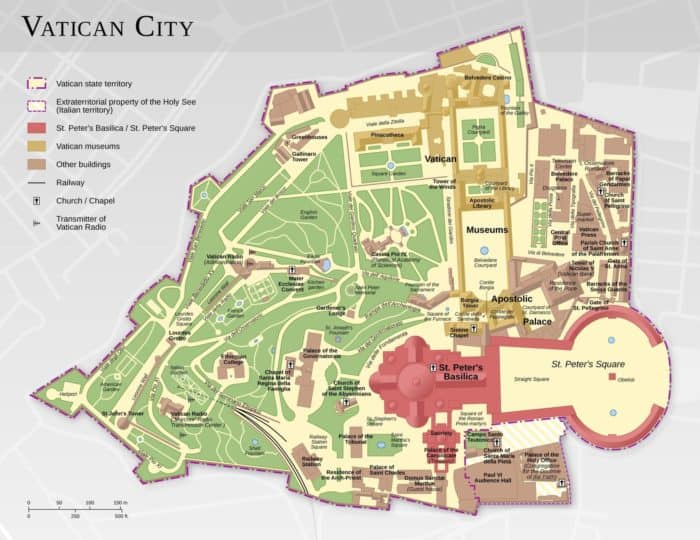
St. Peter's Square
Before entering the Vatican Museums, you'll arrive in St. Peter's Square.
This massive square was designed by Gian Lorenzo Bernini in 1656 to allow for the massive weekly papal audience. Pope Alexander VII oversaw the project.
One of the main focal points of the square is a large obelisk that stands 25.5 meters tall. It was designed by an Egyptian pharaoh and originally stood in Heliopolis.
It was moved to Rome by Caligula in 37 AD. It was moved to its current location in 1586.
This is where you can see the Swiss Guard, the Swiss soldiers who protect Vatican City. You can also pick up Papal tickets here. The Papal Apartments can be seen from here.
View this post on Instagram A post shared by ɴᴀᴛSᴜᴍɪ ᴊᴏ🐑 (@jona1909)
This area was once used by the Roman emperor, Nero, for chariot races and Christian persecution—including Peter in 65 AD.
It was here that Peter was crucified, and he asked to be crucified upside down because being crucified in the same manner as Jesus felt wrong.
Peter was buried on Vatican Hill—the current site of St. Peter's Basilica dome.
St. Peter's Basilica
Like St. Peter's Square, St. Peter's Basilica was designed by Bramante. It was also designed by Michelangelo, Bernini, and Maderno.
The church was built on the grave of St. Peter, the first Pope and replaced Old St. Peter's Basilica which was built in the 4th Century, AD.
Old St. Peter's, which was in dire need of repair, was demolished in the 1500s to allow for the new church to be built in its place.
Many of the stones from Old St. Peter's were used to build the new basilica. It took over 120 years to build St. Peter's.
Walk into the atrium. The five bronze doors in front of you were the first works of Roman Renaissance art.
They depict several Catholic saints. They are only opened on holy years—every 25 years.
View this post on Instagram A post shared by Inês Barriga (@ines.barriga97)
Start to make your way into the nave of the church.
Everything is larger than life in St. Peter's Basilica. It is almost 114 meters wide.
The ornate Baroque interiors were designed as a way to woo churchgoers back to Catholicism during the Counter-Reformation.
To the right is Michelangelo's "Pieta". It depicts Mary holding the body of Jesus.
It sits behind bulletproof glass. He sculpted it in 1499, and it was one of his first major works.
The plaques on the nave floor are etched with the names of famous churches from around the world. They show where the church would end in comparison to St. Peter's.
Continue walking toward the altar. Stop once you are under the dome. This dome was built by Michelangelo.
The dome is one of the largest and most impressive of its kind. It stands almost 450 feet. St. Peter's tomb is nearby, though it is not visible.
You can visit the top of the dome—accessible by elevator or more than 300 stairs.
Sistine Chapel
The Sistine Chapel is one of the most popular sites in Vatican City. This room can get extremely crowded during high seasons.
We strongly recommend taking a guided tour of the Vatican Museums that includes early entry to the Sistine Chapel to avoid crowds.
View this post on Instagram A post shared by Ako Si Gen Ro (@akosigenro)
This chapel is the home to the papal conclaves, the group that chooses the next Pope. The chapel was finished in 1481 and was designed by Baccio Pontelli.
It is named for Pope Sixtus IV, for whom it was named.
The chapel is most famous for the frescoes that adorn the ceilings and walls, painted by Botticelli, Perugino, Ghirlandaio, and of course—Michelangelo.
The frescoes on the walls depict scenes from the life of Moses, scenes from the life of Jesus, narratives from Genesis, and the ancestors of Christ.
The ceiling was painted by Michelangelo from 1508 to 1512. He also painted "The Last Judgment" from 1535 to 1541.
Vatican Museums
The Vatican Museums were founded by Pope Julius II in the early 16th Century.
They are located in Belvedere Palace, the former summer retreat to the Pope. Start your journey in front of the giant pine cone.
Read our in-depth post on the Vatican Museums and how to visit them.
Pine Cone Courtyard
This courtyard is appropriately named Pine Cone Courtyard, thanks to the giant larger-than-life pine cone statue that stands in front of Belvedere Palace.
The courtyard was constructed by Donato Bramante, though the pine cone was constructed much earlier—nearly 2,000 years ago. It originally stood near the Pantheon and represents, Isis, the god of fertility.
Behind you is a giant sphere that was constructed in 1990 by Arnaldo Pomodoro.
Though its meaning is unknown, many speculate that the sphere represents the cosmos.
The two sculptures are very different and represent the old and the new in Vatican City.
Octagonal Courtyard
The next courtyard is called the Octagonal Courtyard. The most impressive piece of art in this courtyard is the Apollo Belvedere.
Apollo was the Greek god of the hunt. Many scholars consider this sculpture to be the most perfect and symmetrical in the world.
View this post on Instagram A post shared by 20 Regions in 2 Years (@20regionsin2years)
It was found during the Renaissance and is thought to have been created around 120 AD. Michelangelo used this sculptor to paint Jesus in "The Last Judgment".
Also in this room are a statue of the River God, Arno; Laocoon, the man who tried to warn the Trojans not to accept the Greek's gift of the wooden horse; and several sarcophagi.
The River God sarcophagus dates back to 140-150 AD. Laocoon was sculpted by Michelangelo.
Hall of Animals
The next room holds "The Belvedere Torso". This is the torso Michelangelo modeled his Jesus's torso after in "The Last Judgment".
The Spiral Staircase
Designed by Giuseppe Momo in 1832, this staircase (also known as the Snail Staircase) is famous due to both its location and size.
This structure is made up of two stairways engraved with iron which form a double helix.
View this post on Instagram A post shared by Todd Fitt (@toddfitt)
Some visitors may be familiar with this shape as that of DNA, but it’s worth noting that there is no way Momo could have known that when the stairs were constructed.
The Round Room
The next room back is also appropriately named. The mosaic floor is 1700 years old and depicts scenes from battle. The giant bath supposedly once belonged to Nero, emperor of Rome.
It's made of imperial porphyry, a purple stone only found in the mountains of Egypt. The room had to be built around the bath.
Gallery of the Candelabra
The long gallery behind the Round Room is full of pale marble statues. These statues were once colorful, but their paint has long since worn away.
Many of the statues were adorned with fig leaves from the mid-16th Century to the early 19th Century to give the statues a little modesty.
View this post on Instagram A post shared by ART | ESOTERICA (@pillars.of.the.earth)
Two of the most prominent statues are of the Greek goddesses Diana and Artemis. Artemis is the goddess of fertility, and Diana is the goddess of the hunt.
Both hunters and farmers used to pray to these statues in hopes of a prosperous year ahead.
Gallery of Tapestries
The next long gallery holds many tapestries that were woven by students of Raphael.
These students would sketch their designs on paper before attempting to fashion large-scale tapestries. All the tapestries depict scenes from Christ's life.
Gallery of Maps
The final long gallery holds 40 maps. These are topographical maps based on Ignazio Dante's drawings from 1580 to 1583.
The ceiling is covered in paintings by Cesare Nebbia and Girolamo Muziano.
Raphael Rooms
To the left are the Raphael Rooms. These rooms include paintings by Raphael and his students.
They are broken down into four rooms: Room of the Segnatura, Room of Heliodorus, Room of the Fire in the Borgo, and Room of Constantine.
Vatican Gardens
To visit the Vatican Gardens, you must purchase a tour ticket. Tours are offered on mini-buses so you can cover more ground easily.
If you plan on going to the Vatican museums, this combined Gardens/Museums ticket might be good for you.
Read more about tours that include the Vatican Gardens .
TIPS FROM LOCALS AND TOURISTS
We thought you might find it helpful to read what others have to say about their trip to Vatican City.
Here is a small sampling of answers to these questions from a Rome travel tips Facebook group from those who have been to the Vatican.
Many people ask if a visit is worth it. For the most part, people said yes.

As for planning ahead, some say to give yourself a full day and that for those who want to move at their own pace, the self-guided audio tour we mentioned above is fine.

Here’s someone who really wanted to make the most of her time. Most people won't need this long!

Here are some great tips when you visit St. Peter’s Basilica. Go early and dress right!

Lastly, many people noted how long the lines are and suggested taking a tour to be able to skip the line.

RELATED POSTS:
- Free Walking Tours of Rome | 5 Types of Free Tours
- Tourist Attraction Passes | How to Save Money in Rome
- Things to Do and See in Rome
Choose a Destination... I want them all PLUS general travel tips. Amsterdam Berlin Boston Charleston Chicago Dubai Lisbon London Los Angeles Miami Nashville New York City New Orleans Paris Philadelphia Prague Rome San Francisco Washington DC
About The Author

Stephen Pickhardt
North america, united kingdom & ireland, middle east & india, asia & oceania.
How to see the Sistine Chapel all by yourself — or explore the Vatican Museums on the cheap

Jun 15, 2022 • 6 min read

A traveler walks with the Vatican Museums' keymaster Gianni Crea (right) walk through the halls of the Vatican Museums © Copyright – Governatorato S.C.V. – Direzione dei Musei
You’d be wrong to assume that, should you find yourself in the once-in-a-lifetime position of gaining access to the Vatican Museums at 6 am — a full three hours before the doors open to the public — there would be any pomp and circumstance when the main entrance door along Rome’s Viale Vaticano swings open.
The door, built in 1932 and topped by Pietro Malendri-chiseled sculptures of the Vatican’s two main artistic superstars, Michelangelo (with a sculptor's mallet in his hand on the left); and Raphael (clutching his palette and brush on the right), is a grand exercise in symbolic expectation. The chiseled words above, in Latin script, are both direct and spine-tingling: Vatican Museums. It need not say more.
However, it’s just a suited security staff member who casually opens the door and says, " Buongiorno! " Were it not for the fact that the general public doesn’t actually use this door (visitors enter through a far more modern gateway a few meters to the left), it wouldn’t feel special at all.
But therein lies the rub. Entering the Vatican Museums at sunrise needs no added fanfare — the treasures awaiting in the museums, void of people and quiet enough to hear an aureus coin drop, do all the work themselves.
I’ve come to the Vatican to meet the clavigero , the official Vatican keymaster, Gianni Crea, who oversees the nearly 3000 keys that open all the doors within the Vatican Museums. Crea heads up a team of 11 clavigeri , who take turns opening and closing the various rooms of the Vatican Museums, including the Sistine Chapel, each and every day. I’m just along for the ride.
The 8 best museums in Rome
Crea, an immediately likable Italian from Calabria, shows me how the keys are kept in a special bunker nightly; and explains that there are five backups of each one. Except one — the key that unlocks the Sistine Chapel. This key is sealed in an enveloped nightly, stamped and sealed by the Swiss Guards, and locked away in the bunker. There is no backup.
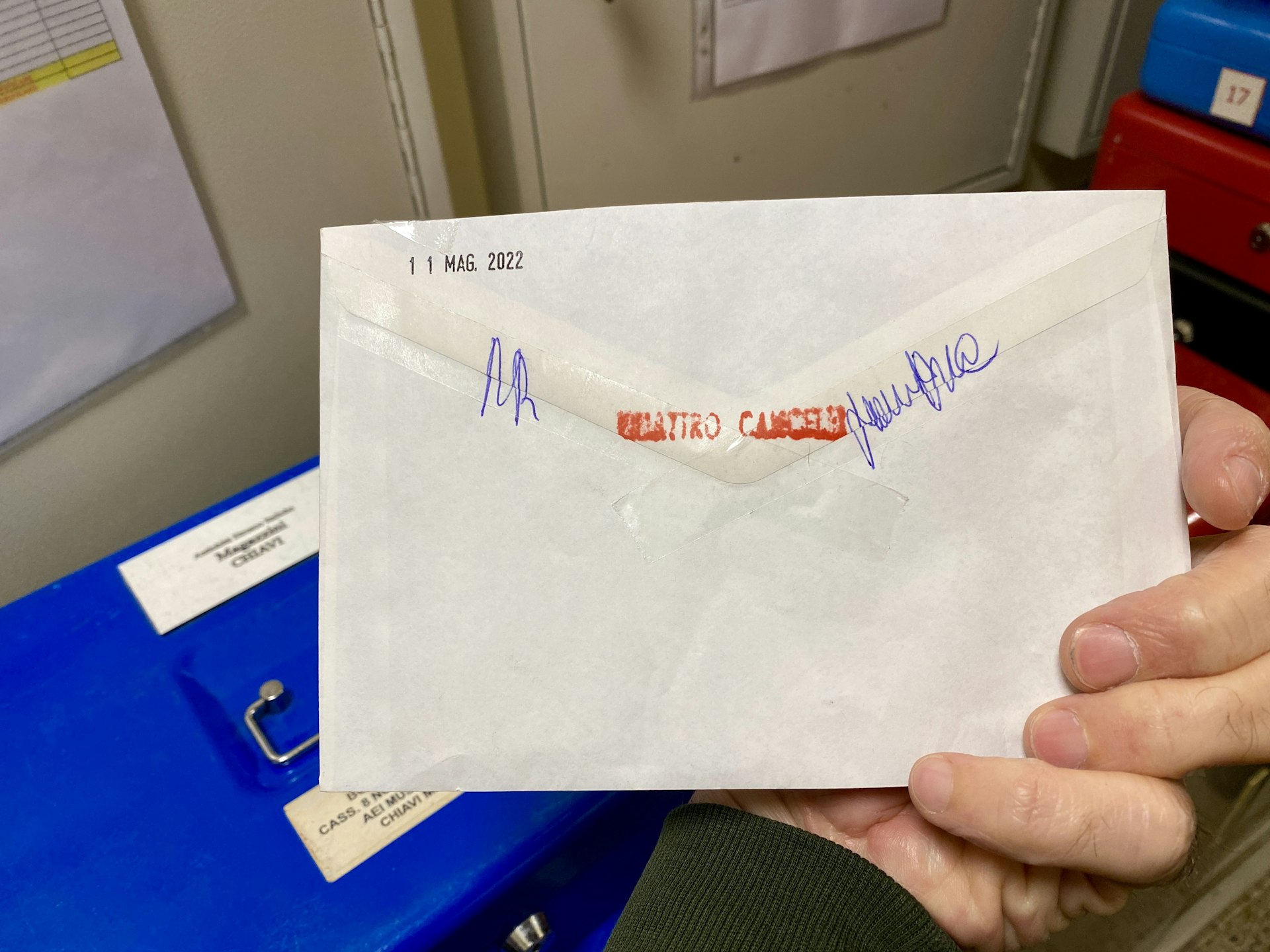
Crea hands me the envelope and I casually tuck it away in the back pocket of my jeans — it’s a long walk to the Sistine Chapel and I need my hands to take notes and snap pictures.
As we saunter through the museums, no words can describe the extraordinary experience of watching the rooms come to life at the flick of a light switch, soundtracked by Crea's spirited commentary. Inside Museo Pio-Clementino, Crea nonchalantly removes a rope and takes me behind the Laocoön, one of the most famous ancient sculptures in the world, like we are peeking behind a TV console in his living room (yes, the rumors are true — the original arm is attached to the back of the statue!). We ascend the original Bramante Staircase — closed to the public in most cases — for an extraordinary morning view across Rome. The Gallery of Maps, probably the second most dazzling gallery in the Vatican Museums after the Sistine Chapel, illuminates like the lights of Heaven’s Gate when the electricity is turned on (so astonishing, we do it twice).
Finally, we arrive at the Sistine Chapel. Crea tells me to get to it. “I’ve lost the key,” I joke. "Nooooooooooo!" says Crea with a wry smile. I turn the key to the left. The door opens. And there it is: The most legendary, most eye-popping, most creatively-astonishing room in the world. Empty — there are no words.
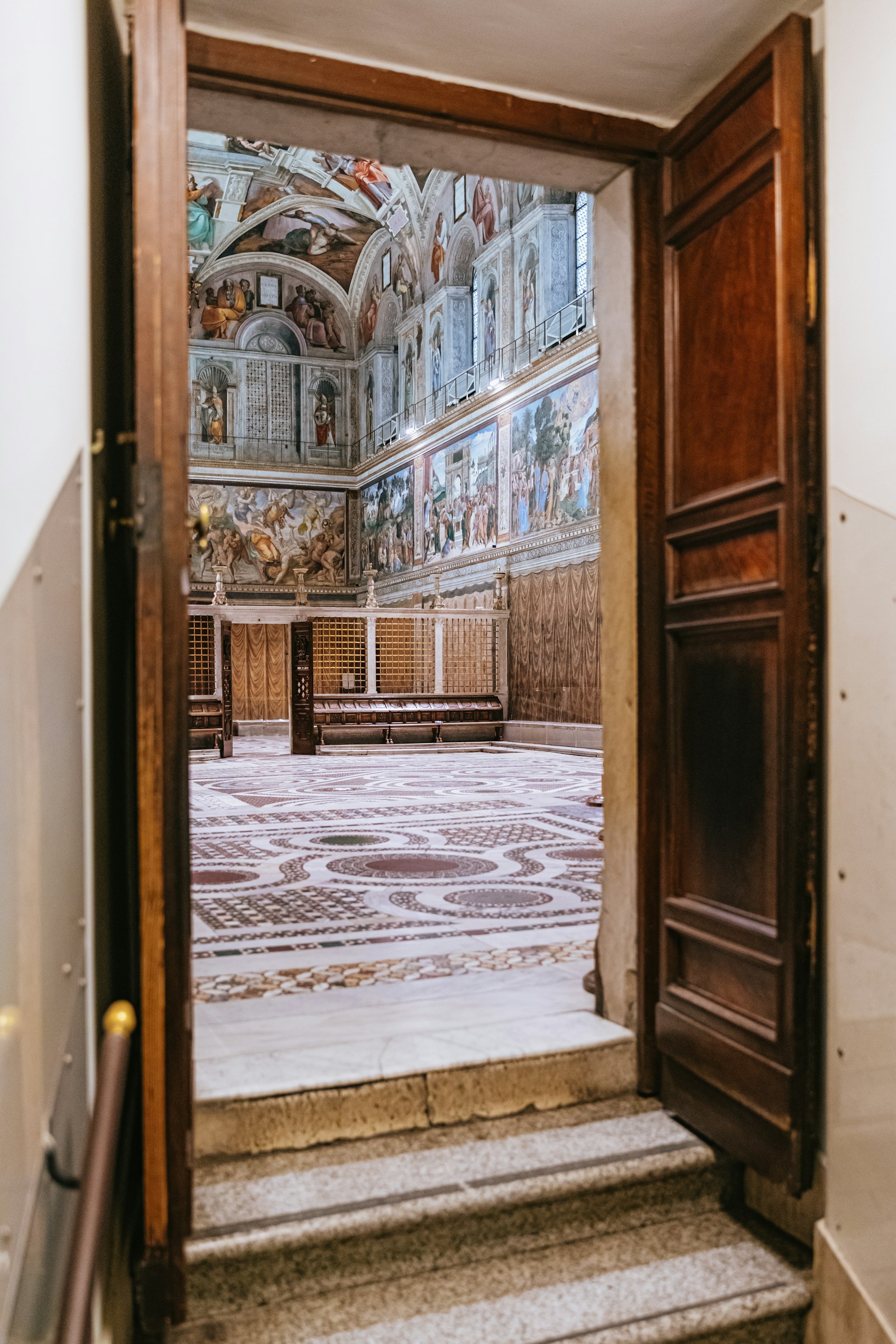
So, how can you experience this once-in-a-lifetime, clavigero-guided tour of the Vatican yourself? Well, currently, the only way is to enter GetYourGuide’s "Turning the Lights On at the Vatican Museums" contest . Other tours offer access with clavigeri, but only one will get you face-time with Crea.
But there are a lot of other fantastic ways to do the Vatican — including exclusive private tours to options that won't break the bank.
The Vatican Museums house one of the world’s most immense collections of ancient sculptures and Renaissance art — some 70,000 works in total, of which 20,000 or so are actively displayed in 24 interconnected galleries across 7 km of museum space. It’s overwhelming —and it’s crowded. Pre-COVID numbers in 2019 recorded some 6.9 million folks through the turnstiles. Is there a way to keep your sanity along the way?
Sì, signori! Depending on your budget, the options are as daunting as the museum itself.
Everything you need to know before visiting Rome
Vatican Museums on the cheap
The absolute cheapest route is booking admission tickets directly (do it well in advance, up to 60 days), which nets you an unprecedented laundry list of world-class art for less than the price of a gourmet pizza back home (adult/reduced €17/€8 plus a €4 reservation fee and optional audio guide €7). Post-COVID, booking online in advance is compulsory.
If the goal is the Sistine Chapel at its quietest, show up at least 1.5 to two hours prior to the 9 am opening to ensure a strategic position in line (keeping in mind you will not be the only person with this idea!). High tail it direct to Michaelangelo‘s masterpiece following the shortcut signage and you’ll arrive before most of the masses. Afterwards, work your way backwards to see everything you flew by when the doors opened.
You won’t have the Last Judgement to yourself, but it’s the best you can do on a budget.
Top things to do in Rome
Early access, semi-private and group tours
Another way to beat the crowds at the Vatican Museums are early morning and evening semi-private and group tours. The Vatican itself offers both a Prime and Prime VIP Experiences, both of which tour the museum one hour before opening. Though you won’t get the clavigero as your tour guide, you will be led by an authorized educational guide who will notably enhance your overall experience.
The difference between the two experiences is group size and price: Prime groups host up to 25 people for €63 per person. The Prime VIP limits the group to 10 for €45 per person; both tours include breakfast and a guided tour through the Upper Galleries (Candelabras, Geographical Maps, and Tapestries), the Raphael Rooms and the Sistine Chapel. Other parts of the Museums may be visited without the guide after breakfast during normal opening hours.
Various independent tour companies offer similar early access and night tour options ranging in price between €50 and €100; and of course semi-private and group tours are available throughout the day as well. Skip-the-Line access for St. Peter’s Basilica is often offered as well.
Private tours of the Vatican
Private tours of the Vatican are similar in style to semi-private and group tours, but are just for you and yours. They will usually involve entering one hour before opening time, include breakfast in the Pinecone Courtyard, and feature a dedicated guide. Most options settle in around €150 to €250 per person.
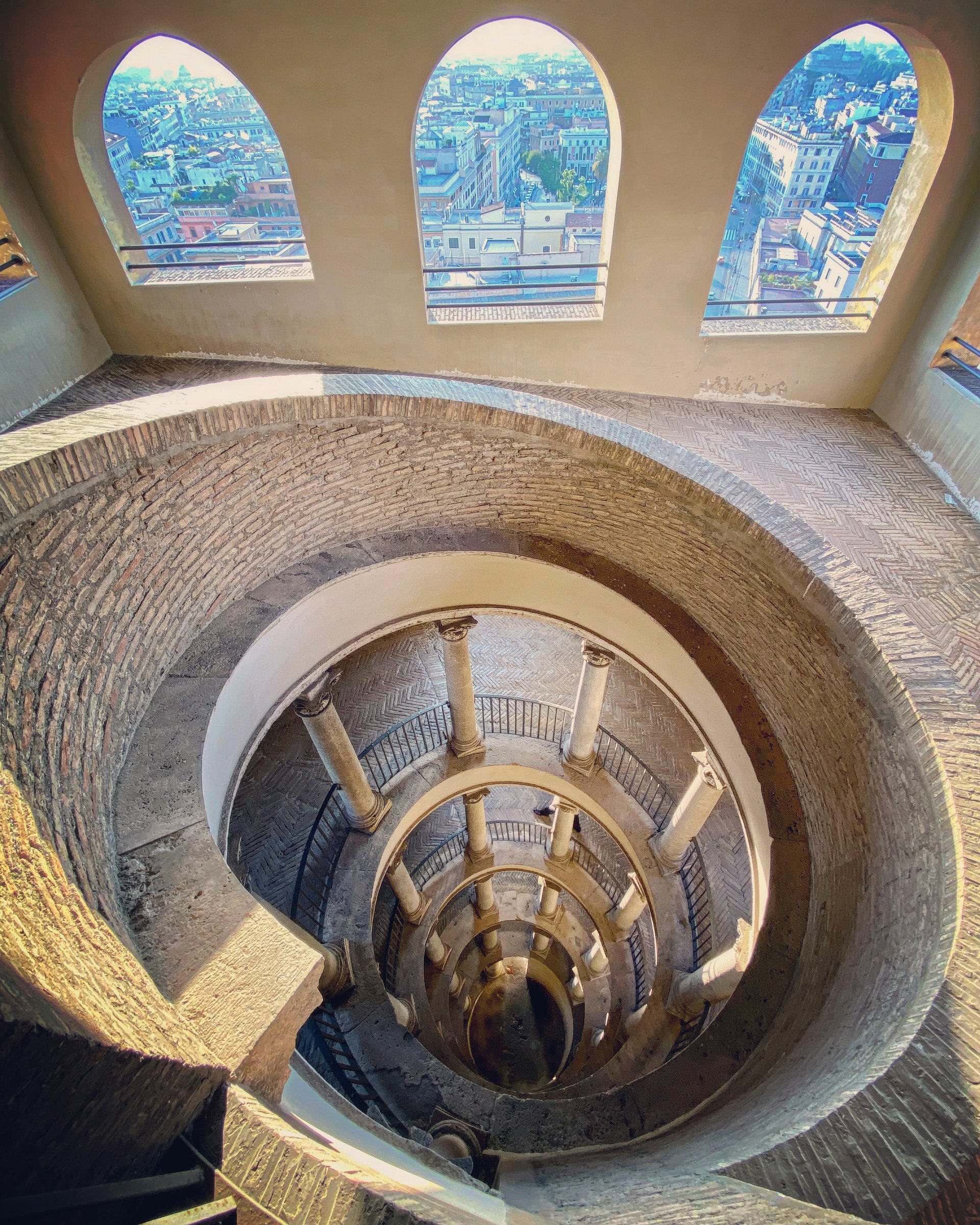
Some of these tours will even including off limit highlights, such as the original Bramante Staircase, and sometimes explore deeper into galleries that other tours cast but a tertiary glance.
If you are looking to unlock your way to the Sistine Chapel with a clavigero, that’s possible, too, with numerous private companies offering the experience from around €300 per person and up (options with UK-based True Travel, who includes the experience has part of a broader package that includes hotel accommodation, transfers and other sightseeing experiences, start from €2500 to €3000 for two people).
You won’t get the boss (Crea) — one of his staff usually leads these tours — or his remarkable stories. But you will experience the Vatican Museums like few others have.
Explore related stories
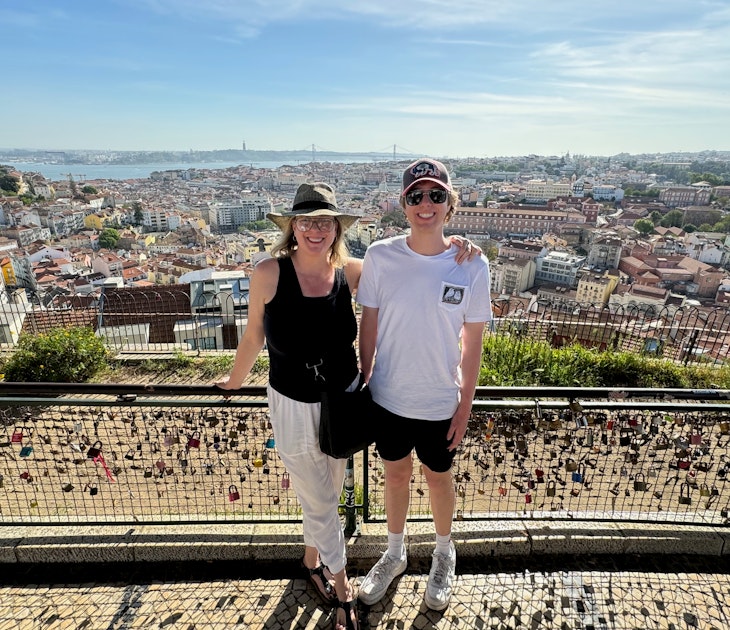
Apr 30, 2024 • 5 min read
Lonely Planet's Brekke Fletcher recently traveled to Lisbon, Portugal. Here, she shares some tips and insights for anyone planning a similar trip.
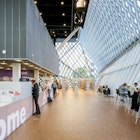
Apr 4, 2024 • 7 min read
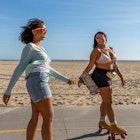
Feb 23, 2024 • 8 min read

Jan 9, 2024 • 4 min read

Nov 1, 2023 • 7 min read
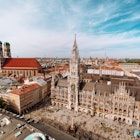
May 8, 2024 • 6 min read
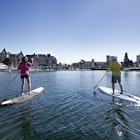
May 8, 2024 • 11 min read
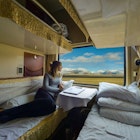
May 9, 2024 • 6 min read
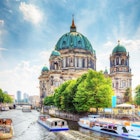
May 9, 2024 • 14 min read
Account Options
Vatican Museums Self Guided Audio Tour
Italy, Rome

Book Your Tour
Self guided audio tour.
Free cancellation
Cancel up to 24 hours in advance for a full refund
Vatican Museum's self-guided audio tour, including a comprehensive Vatican Museum audio guide, is a fantastic way to immerse yourself in the stunning art and history of this iconic institution. With a Vatican Museum self-guided audio tour, you can discover the works of Michelangelo, Raphael, and other legendary artists, as well as learn about the fascinating stories and symbolism behind the exhibits. This Vatican Museum tour is a must-see for anyone interested in art and history, and our Vatican Museum audio guide enhances the experience, providing insightful commentary. Our Vatican Museum audio guide tour allows you to dive into the history of this important religious venue located in the heart of Vatican City. Across 42,000 meters, the museums are home to over 70,000 exhibits, including some of the world’s most important Roman sculptures and Renaissance masterpieces. It is also home to the Sistine Chapel, decorated by the renowned artist Michelangelo, together attracting millions of visitors every year and making it the third most-visited museum in the world. Explore it with our Vatican Museum audio tour for an enriching experience. The entrance ticket for the Vatican Museum tours, available for purchase separately, provides access to this extraordinary collection of art. Make the most of your visit by opting for our Vatican Museum audio guide to enhance your understanding and enjoyment. With this app-based self-guided audio tour, including a Vatican Museum guide, you will enjoy unlimited independent sightseeing of the Vatican Museums. There's no need to meet up with a member of staff; simply download our App and start your experience straight away anywhere. Please note this is not the audio guide offered on the premises. This self-guided audio tour, complemented by our Vatican Museum guide, is subject to the opening days and hours for the Vatican Museums. Ensure you plan your visit accordingly, and remember that the entrance ticket needs to be purchased separately.
Inclusions & exclusions
What you get:
What you don’t get:
Discover the masterpieces of this venue, including:
Know before you go
Important details to understand before starting your tour:
Please note, this is a digital experience. There is no meeting point or staff on-site.
Frequently Ask Questions
Do I need to find any guide if I have purchased a Vatican Museums Self Guided Audio Tour?
If the product you have purchased is a self-guided tour, as indicated in the title. Therefore, there is no designated meeting point, and there is no need to meet with someone from our team. You have the flexibility to enjoy the tour at your convenience.
Do the entrance ticket comes with purchasing this audio guide?
The entrance ticket to Vatican Museums is not included and needs to be purchased separately. This self-guided audio tour is subject to the opening days and hours for the Vatican Museums.
How to download Vatican Museums Self Guided Audio Tour?
Simply scan the QR code on your voucher and follow the instructions to download the VoxCity app and the city map in your preferred language. If you encounter any problems shoot us an email at [email protected] or contact our customer support live 24/7 through our website. Remember that you can download the city map prior to your arrival.
Can I use my Vatican audio guide anytime in future?
The Vatican audio guide allows you to use it on a future visit if you are unable to enjoy it today. It remains accessible and available for you to use on any suitable day in the near future too.

Rated By Vox Citizens.
Overall rating
Review summary
Vox City's Vatican Museum audio guide Tour was a pilgrimage through art. The audio guide eloquently told the stories behind the Vatican's renowned collections, immersing me in the world of religious and secular masterpieces.
The Vatican audio guide provided captivating narratives that made the artwork come alive. From the grandeur of the Vatican's vast collections to the intimate details hidden in each brushstroke, it was an amazing experience that left me in awe.
Embarking on Vox City's Vatican Museum audio guide was like entering a magical world. As I explored the vast halls adorned with breathtaking masterpieces, the audio guide seamlessly transported me back in time, revealing the stories behind each painting and sculpture.
With Vox City's Vatican Museum Audio Guide Tour, I became a part of the rich tapestry of history. As I wandered through the magnificent corridors and admired the awe-inspiring Sistine Chapel, the Vatican audio tour transported me to the time when these treasures were created. It was an immersive journey that left me in awe of human creativity.
I felt like a true art connoisseur with Vox City's Vatican audio guide Tour. The Vatican audio tour skillfully guided me through the maze-like galleries, providing intriguing insights into the works of Michelangelo, Raphael, and countless other legendary artists. It was a remarkable experience that deepened my appreciation for the beauty of the Vatican Museums.
Seraphina Evangeline
Traveling solo can feel isolating, but Vox City's friendly narration kept me company throughout my Vatican Museum tour.
Maximilian Bartholomew
Forget the crowds, Vox City audio gudie gave me the perfect Vatican Museum tour!
Discover More Experiences

Rome: Piazza Navona Self Guided Audio Tour
- Fountain of the Moor
- Domitian Stadium
- Sant'Agnese & More

Navona Underground Experience - The Domitian Stadium
- The Domitian Stadium
- Piazza Navona
- Masonry stadium & More

The Green Lung of Rome Self Guided Tour
- Piazza del Popolo
- Villa Borghese
- Pincian gate & More

Rome: Skip the line Pantheon ticket + Audioguide
- The Rotonda
- The Eminent Tombs
- The Dome & more…

Rome: Trastevere & Jewish Ghetto Self Guided Tour
- Turtle Fountains
- Tiber Island
- Portico of Octavia & More
The World At Your Fingertips.
Experience what it's like to Discover the world with the Vox City App.

Exclusive discounts and travel inspiration
Weekly in your inbox, daily in your feed

Explore the World
- Where to Stay
- Where to Eat
- Best Time to Visit Rome
- Top 10 Tips for Rome
- Bathrooms in Rome
- What to Pack & What to Wear
Money Matters
Getting Around
Getting to Rome
- Learn Italian
- Can You Travel to Rome Right Now?
- Italy Green Pass - do you need one?
- Rome Coronavirus News & Updates
- Rome & Vatican Tours
- Italy Tours
- Transfers & Transport
- Sign up & get a FREE ebook Subscribe Today!
- Romewise Home Page
- Visiting the Vatican
- Vatican Museum Tours
Vatican Museum Tours - How to pick the best one?

By Elyssa Bernard
December 21, 2023
Wondering which of the many Vatican Museum Tours is right for you?
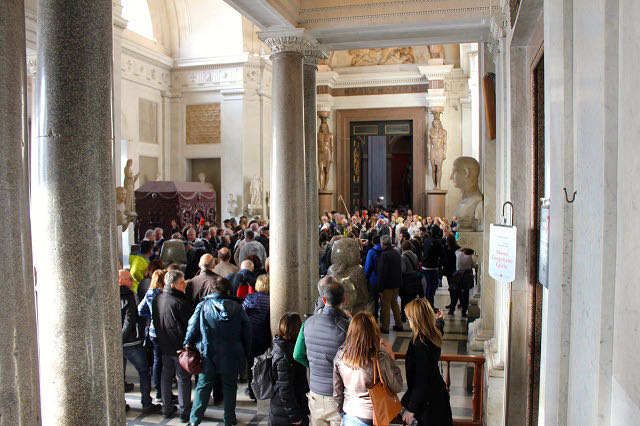
There are so many options, so h ow do you decide which one to take?
Vatican Museum Tours - Why it's so hard to choose
One of the questions I get most often is "How do I decide which Vatican tour to take?"
I know there are a lot of choices.
There are early morning tours, small group tours, tours that include Saint Peter's Basilica, the Necropolis of Via Triumphalis or the Vatican Gardens . . . And even then, there are a lot of different companies that offer the same or similar tours.
So how do you choose?
I'm going to break down the different TYPES of tours, and then give you links to book the best ones of each type.
On this page about Vatican Museums tours, you'll find:
- Is it worth taking a Vatican tour?
Tours through the official Vatican website
- Standard Group Tours of Vatican Museums
- Vatican Museum Tours before Opening Hours
- Super-speedy Tours of Vatican Museums - head straight for the Sistine Chapel and bypass the rest
- Small/ Semi-private Group Tours of Vatican Museums
- Vatican Museums on Friday or Saturday Night
- Private Tours of Vatican Museums
- Vatican Gardens and Vatican Museum Tours Combo
- VIP Vatican Museum Tours with out-of-hours viewing of Sistine Chapel
- Tours that include the Vatican + Colosseum
- Do it yourself - build the Vatican tour you want!
Vatican Museum Tours - Is it Worth Taking a Tour?
I love to visit the Vatican Museums on my own because I can take as long as I want, and linger over a painting or a room if I feel like it.
But that is partly because I am lucky enough to live here and be able to visit often.
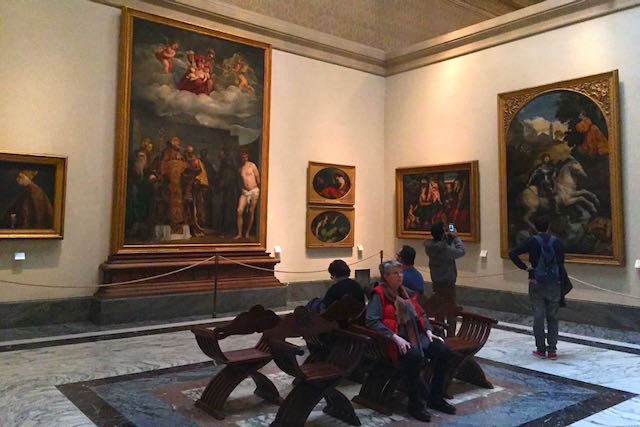
I've also taken part in pretty much every Vatican tour out there, and love that experience also.
Now the question is, is it worth taking a tour to visit Vatican Museums?
In my opinion, absolutely yes.
Here's why:
- Easy - Your tickets will be bought and ready, nothing for you to do but show up.
- Focused - With the vast amount of art to see in the Vatican Museums, having a guided tour can help you to focus on just some of the most important sections and pieces.
- Just the right amount of sight-seeing - On a guided tour, you will keep your visiting time to a limit, and won't overdo or exhaust yourself trying to "see it all."
- Help with your questions - When you have a guide, there is someone to answer your questions as they pop up. This happens to me all the time and I find myself asking museum guards (who may or may not know the answer), or trying to look things up on my phone. It's considerably nicer to have a knowledgable guide who can tell you (correctly, and in person) just what you want to know.
- Don't miss a thing! - On a guided tour, you will no doubt see things you would have overlooked on your own. This also happens to me a lot in Rome, and every time I take a guided tour with an expert, I learn something new. The first time I went to the Vatican Museums on my own (years ago), without a guide, I breezed past the Laocoön sculpture because I didn't even know what it was, let alone to look for it!
And if you take a more special kind of guided Vatican Museums Tour , like a private, small-group, out-of-hours tour, then it can make an even bigger difference.

Vatican Museums Audio-Guide
You may also decide to skip the Vatican Museum tours, and visit on your own with an audio-guide.
This can be a good compromise, because you will get more information than you can from the little printed info-cards next to some of the pieces in the museums.
I still would recommend a human guide because they are better able to bring the whole thing to life for you, and are there to answer questions.
If you do decide to use the Vatican Museums Audio-Guide, you can book this when you pre-book your Vatican Museums tickets through the Vatican website, or, you can opt to get the audio-guide once you enter the museum.
Vatican Museum Tours - Which One is Right for You?
One of the most frequent questions I get is, which Vatican Museum tours do you recommend?
And of course, there is not one right answer: this depends on what you are looking for, how much time you have and want to commit to, and your budget.
All Vatican Museum tours include skip-the-line tickets, a visit to the Sistine Chapel , and a licensed tour guide (someone who is knowledgable and who is legally allowed to take you on this tour.)
Most tours are offered in English or Italian.
You can usually book a guide in other common languages too, such as Spanish, French, German, Japanese, Korean, Russian, etc.
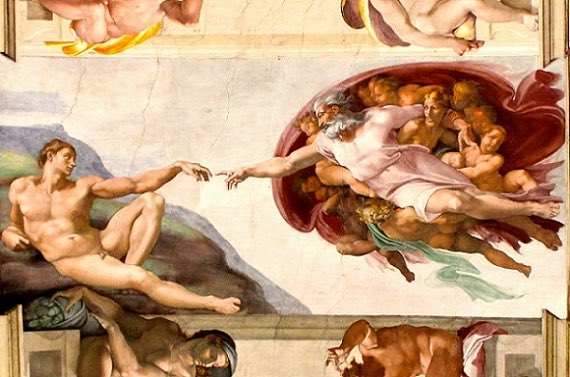
There are also a few options for pre-booking special tickets, without a tour.
🤙 Roaming in Rome? 📱
Get yourself an Italian eSIM for calls, messages and data when traveling here.
Save on data charges with plans from just 19€ from Holafly - our recommended eSIM provider!
Click here to get yours now and use code ROMEWISE to save 5%!
What happens when you book a tour of the Vatican Museums using the official Vatican Museums website ?
First, you will pay less, as there is no tour agency or middle-man.
Second, you will be assigned a tour guide who is directly employed by the Vatican Museums.
What is the difference between booking a tour of the vatican through the vatican website and a tour agency?
All guides who give tours of the Vatican Museums must be licensed guides and they must have permission from the Vatican Museums to give tours there.
The difference between a Vatican Museums employee/guide and an outside guide may simply be in the quality of the guide.
I must say that I have taken tours with Vatican Museum employees/guides, and some of them have been fantastic.
But you just never know.
No matter what tour you book, unless you hire a private guide that you either know or who has been recommended to you, you have no way of knowing what that guide will be like.
Reasons to choose booking with the Vatican Museums or with a tour company
Sometimes, tickets and tours may not be available on the Vatican Museums website but you might find more availability for tickets and tours on a certified reseller such as Tiqets, Get your Guide, or Viator.
Or, perhaps you have heard about a specific tours company or tour, such as Walks of Italy, who offer two of the most popular tours of the Vatican Museums, Pristine Sistine, and the Vatican Key Master Tour in which you get to open the museums.
Read on to discover more tour options, and the differences between the different types of tours you'll find, both on the Vatican website and on outside tour company sites.
NEW FOR 2024!
The archeological area of the Vatican Necropolis of Via Triumphalis is now open for visitors.
This is an ancient Roman burial site that is within the Vatican walls and before now was very difficult to get access to.
You can only enter as part of an official Vatican tour group, and tickets need to be purchased through the official website .
This is an entirely separate visit, so you will not have access to either St Peter's Basilica or the Vatican Museums.
Click here to watch my YouTube video about it and see what it's like!
Vatican Museum Tours - Skip the Line Group Tours
One of the most popular of the Vatican Museum tours is the group tour .
You skip the line of course, and have a knowledgable guide so you don't have to think about what to see or where to go.
All of these tours include the Sistine Chapel , usually ending there.
St Peter's Basilica Shortcut
You can only take the shortcut from the Sistine Chapel to St Peter's Basilica if you are on a tour that INCLUDES the basilica.
The shortcut is open from 9:30 am - 5 or 5:30PM, and it's ONLY accessible to tour companies or private guides that you book OUTSIDE the Vatican Museums website.
The Vatican Museums does not have any ticket or tour that includes the shortcut.
This means that you won't have access to the shortcut during the KeyMaster tour , the Extra Time tour , or any other tour that does not specifically include the basilica.
If you book any tour of the Vatican Museums, you can check the details to see if it finishes in the Sistine Chapel or the basilica.
Click here to view a map of Vatican City (it will open in a new page.)
When you take a group tour, you will have what's called "whisper" headphones, so the guides can speak in a normal tone and you can easily hear them.
As of January 1, 2024, all group tours will be limited to 20 people.
The best part about this kind of group tour is the price.
This is the least expensive option of the Vatican Museum tours.
Visit the Sistine Chapel before it opens to the public on this special access tour.
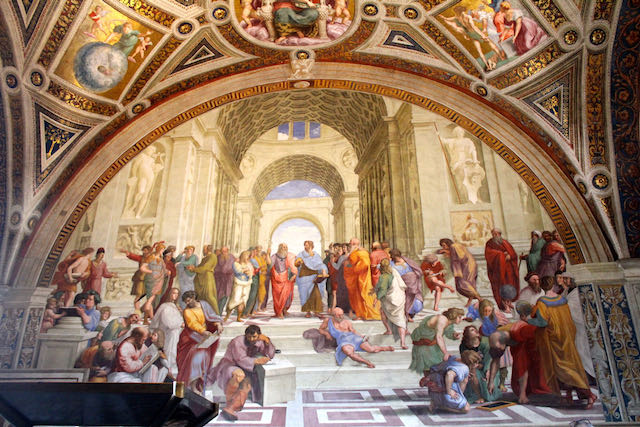
There are many options even for taking a group tour.
Click the below to book a group tour of the Vatican Museums that includes:
- Only the Vatican Museums and Sistine Chapel (and not St. Peter's Basilica - just access, but no tour)
- The Vatican Museums, Sistine Chapel and St. Peter's Basilica (this is an excellent tour because you skip ALL the lines, even the priority lines, AND you get a tour of the Basilica)
- Handicapped access (most tours do NOT accommodate wheelchairs , so you need to pick one that specifically DOES. This tour covers the Vatican Museums and Sistine Chapel but not St. Peter's Basilica.)
- The Vatican Museums, Sistine Chapel and The Pinacoteca (The Pinacoteca is the Vatican Museums Paintings gallery - most tours skip this but it is amazing, full of masterpieces, and worth the time if you have it! The Basilica is not included on this tour, but you can visit on your own without queuing.)
- The Vatican Museums, Sistine Chapel, St. Peter's Basilica with Hotel pick-up/drop-off
A word about "skip the line"
Of course one of the benefits of taking a tour is the possibility to skip the line.
You can skip the line even without a tour, simply by pre-booking your tickets.
HOWEVER, you should know that nobody can skip the line for security, and when Rome is really crowded, as it is nearly all the time lately, you may find a bit of a wait to get through security.
So prepare yourself for that, and also plan to arrive a bit earlier than your entry time to give yourself plenty of leeway in case of long security lines.
Vatican Museum Tours - Early Access
The Vatican Museums open at 8AM Monday - Saturday. (There can be different closing times depending on the time of year.)
However, it is possible to gain early access to the Vatican Museums.
There are two things you need to know about this kind of tour:
- There are a LOT of companies doing this , so you will not have an exclusive visit (although of course there will be a lot FEWER people than during the morning rush.)
- In order to get the advantage of seeing the Sistine Chapel before the crowds arrive, you will need to rush through the rest of the Vatican Museums on your way there, missing most of the major works of art along the way. Either the tour will go back through so you can see the rest of the museums at a slower pace, or, if the tour itself does not offer this, you can do it on your own. In either of these cases, you will wind up in the Sistine Chapel a second time before you finally exit.)
That said, it will still feel like a special experience to get in there before the crowds fill in.
Also, many people do want to "just" see the Sistine Chapel, so this helps to keep the visit short if you want to.
For a more exclusive experience, jump down to this section .
As of January 2024, it will only be possible to gain early access to the museums by booking a tour.
Previously you could book early access entrance tickets, but these have been removed with the extension of the opening hours from 9AM to 8AM.
Open the Vatican Museums and turn on the lights of the Sistine Chapel!

One of the most special tours I ever took was with the Key Master of the Vatican Museums .
We literally went through the museums and opened them up and turned on all the lights.
You can book this through Take Walks and I assure you it will be one of the most amazing things you've ever experienced!
Before Hours Vatican Museums Sistine Chapel and Basilica Tour
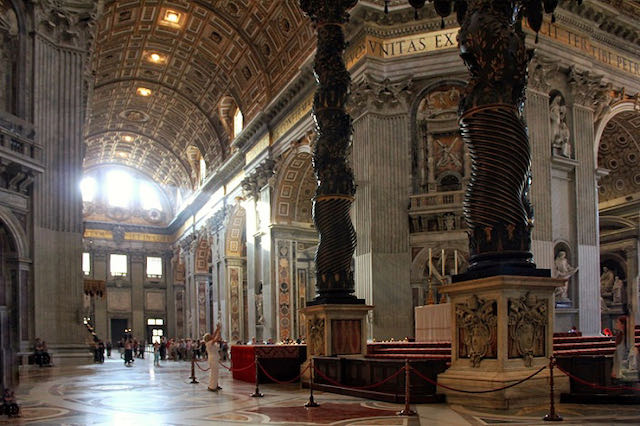
With this 3-hour tour, you will go with group of around 15 people into the Vatican Museums before they open to the general public.
Click here to book this Early Access Group Tour of the Sistine Chapel and St. Peter's Basilica.
The perfect 3-day itinerary in Rome
Trying to figure out how to organize your visit to Rome? I've got the perfect 3-day itinerary for first-time visitors (or those who have not been here in a while.) It works for a 2.5 day visit as well.
In my 3-day itinerary, you'll see all the major must-see Rome attractions like the Vatican , Colosseum , Trevi Fountain , Pantheon , Piazza Navona , Spanish Steps , Castel Sant'Angelo , and much more.
And if you have more time, or want suggestions for extra/other things to do, you'll find that there too.
Visit my page with the best 3-day itinerary in Rome for first-timers .
Speedy Express Tours of Vatican Museums and Sistine Chapel
Maybe I should have put this one at the top of the page.
One of the most common questions I hear about the Vatican Museums is:
Can I just go see the Sistine Chapel ?
I've answered this before (the answer is no) and even with a tour that guarantees this, you really cannot.
There is an "express route" to the Sistine Chapel from the entrance of the Vatican Museums, which skips the Pinacoteca, the Pio-Clementine Museums, the Egyptian and Etruscan wings.
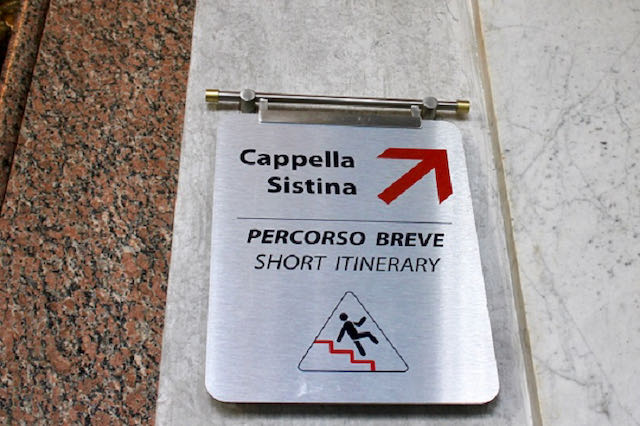
But you still have a lot of museum to get through before you make it to the Sistine Chapel, so even without visiting any of the above, and bee-lining to the chapel, it will still take you at least 30 minutes just to walk there quickly, without stopping to look at anything.
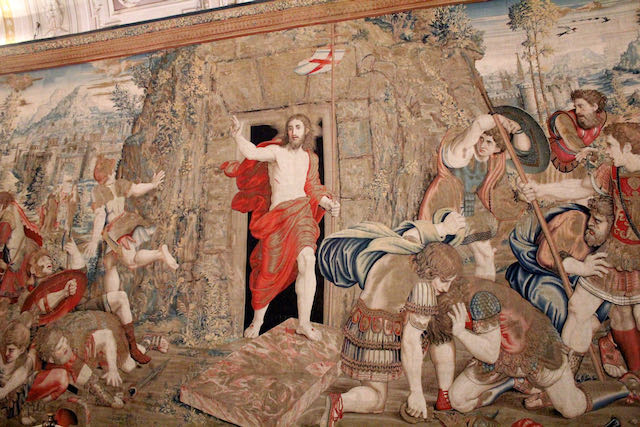
That said, there are tours that help you do this.
In the section just before this one, about Early Access Vatican Museum Tours , you have options for going in before opening hours.
In theory, these could also be considered as fast tours, since you do go directly to the Sistine Chapel.
But with the above, you are also given the chance to go back and take more time in the museums.
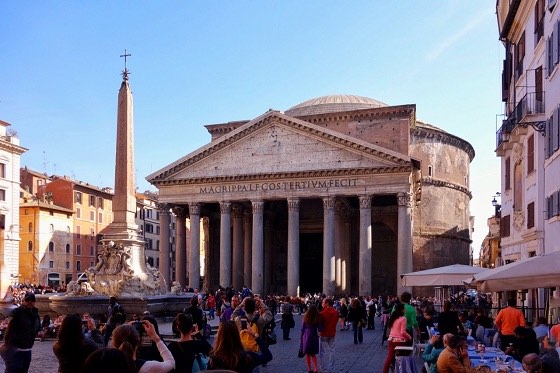
No matter what season you visit Rome, here are 4 things never to leave at home:

Disclosure: If you make a purchase through a link on this page, I may receive a small commission - at no extra cost to you. Thank you for supporting my site!
Normally I would urge you to visit the rest of the museums, as they are chock full of some of the world's most amazing and beautiful art.
But maybe you have really limited time, or who have been to the museums before and want to re-visit just the Sistine Chapel.
So, you can book an Express tour:
Visit to the Vatican Museums and Sistine Chapel with option to add on St. Peter's Basilica .
Your guide will provide explanations of the Sistine Chapel, but as you are sort of speeding through the rest of the Vatican Museums, you won't get detailed explanations of what you're walking past.
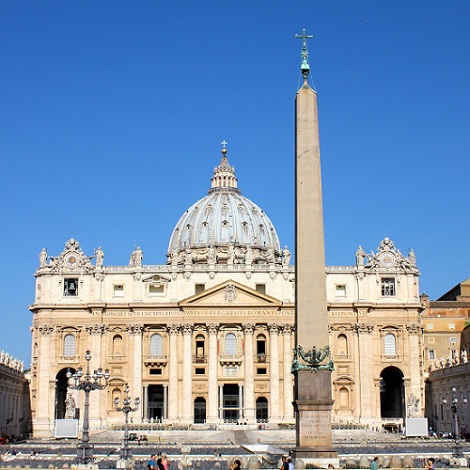
Vatican Museums - Small Group Tours
In the section above, there is a link to a small group, exclusive tour.
That tour goes inside the Vatican Museums early, before they open to the general public.
It's an amazing experience and I highly recommend it! (More about this below.)
If you're looking for an excellent truly small group Vatican Museums tour, click here.
Their small-group tours are max 20 people, but when you go to choose your date, you can see they also offer even smaller groups or private tours (which costs a bit more but may be worth it.)
Ready to plan your trip?
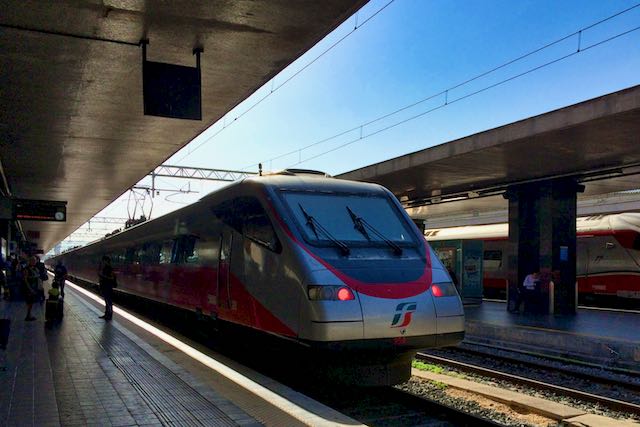
Vatican Museums - Private Tours
Taking a private tour is exactly what it sounds like: this is a fantastic option if you want a completely private, personal tour, with the guide focused just on you.
Of course, if you are a family or group of 4-6 people, it becomes more affordable.
Click here to book a private tour (minimum 2 people), of the Vatican Museums and Sistine Chapel.
Vatican Museums + Vatican Gardens Combo Tour
The Vatican is home to some amazing gardens , which are beautifully kept and landscaped.
But they are in two places: one is just behind St. Peter's Basilica in Vatican City.
The other is in the summer residence of the Pope, Castel Gandolfo .
You can easily book the Vatican Gardens tour through the Vatican Museums website .
It includes entry to the Vatican Museums but no tour or guide.
If you want, you can book this through an outside agency so you get a more complete tour experience.
See below for options.
Tour of Vatican Museums and Vatican Gardens in Vatican City
With this small-group tour, you will first visit the Vatican Gardens.
After visiting the gardens, your group will head inside to tour the Vatican Museums, finishing inside the Sistine Chapel.
Click here to book a Vatican Gardens + Vatican Museums combo small-group tour.
Currently unavailable - stay tuned for the updates!
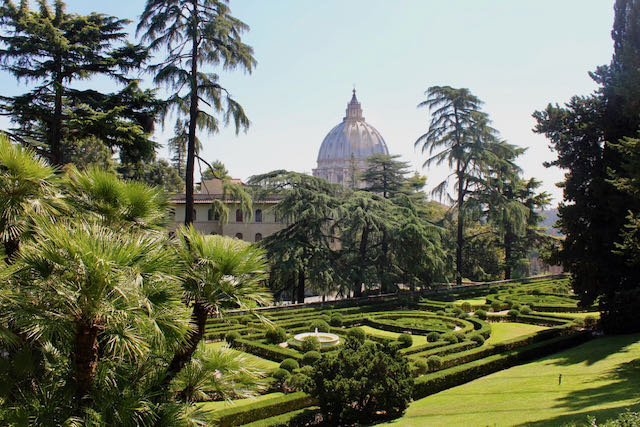
Visit to Vatican Museums and Gardens in Castel Gandolfo
If you have a full day to dedicate to this, and want to experience something really special, a whole world of tranquility, quiet and beauty, away from the hustle and bustle of Rome, this is a wonderful tour.
It allows you to skip the line and visit the Vatican Museums, then walk through the Vatican Gardens and get on a train that will take you just half-hour outside Rome to the summer residence of the Pope: the stunning Barberini Gardens at Castel Gandolfo , only recently opened to the public.
Click here to book your full day Vatican Museums + Vatican Gardens at Castel Gandolfo tour .
(Note this option does not include a visit to Saint Peter's Basilica.)
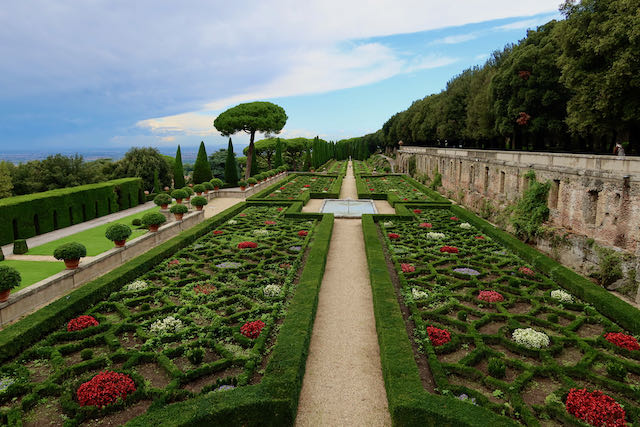
🔐 Store your bags and luggage securely! 🧳
We're parterned with Radical Storage who have locations across Italy for you to keep your luggage safe before and after check-in, while on day trips and for everything else between 👌
Click here to book now and use code ROMEWISE to save 5%!
VIP Vatican Museum Tours with out-of-hours Viewing
There are a good selection of Vatican Museum tours that offer early morning entry to the museums (see above.)
This means that although your group is going in before the normal opening time, you will also be going in with all the other tour groups doing the same thing.
Which means it is not quite as exclusive as it sounds, even if it's definitely less crowded than going at opening time (which is why it's actually a pretty affordable tour, usually costing less than 100€ per person.)
If you're really looking for an exclusive visit to the Vatican Museums out of hours, here are a couple of options:
VIP: Sistine Chapel Private Viewing and Small-Group Tour of the Vatican's Secret Rooms
Visiting the Vatican Museums after hours and seeing the secret rooms was one of the best tours I ever took.
You can read more about it on my dedicated page .
VIP Vatican Museum Tours - After Hours Private Viewing of Sistine Chapel

For a really special experience, book a VIP tour , that features after-hours viewing.
You really do have a much more exclusive experience than the groups going before the Museums open.
Most Vatican Museum tours do not offer this option, so you will have the Sistine Chapel almost entirely to yourselves.
Click here to book your VIP tour of the Vatican Museums with Sistine Chapel Private Viewing.
And for an even more exclusive, private, truly after-hours tour, you can book this one.
Tour the Vatican Museums and the Colosseum on the same day
While I normally don't recommend this, sometimes a day is all you have, and you really want to fit in these two Rome must-sees.
You can try to do this on your own, but if you want to make the most of this day, especially if you are doing this as a shore excursion, I really recommend doing it as a guided tour.
Click here to book visit my page about this, for more details .
Click here to book a guided tour of the Vatican Museums and the Colosseum in one day .
You can also book a night tour of the Colosseum at certain times of the year, so you could see the Vatican Museums during the day and then do this night tour.
Do it yourself - build the tour YOU want!
If you are still not sure which tour to book, you can visit this tour booking page where you can choose the length of the tour, the time of day, and the maximum group size you want (the smaller the group, the more it costs per person.)
Click the "filters" button and go through and check the boxes you want, and you'll see all the tour options available according to your criteria.
Want to save this to Pinterest? Pin it here!
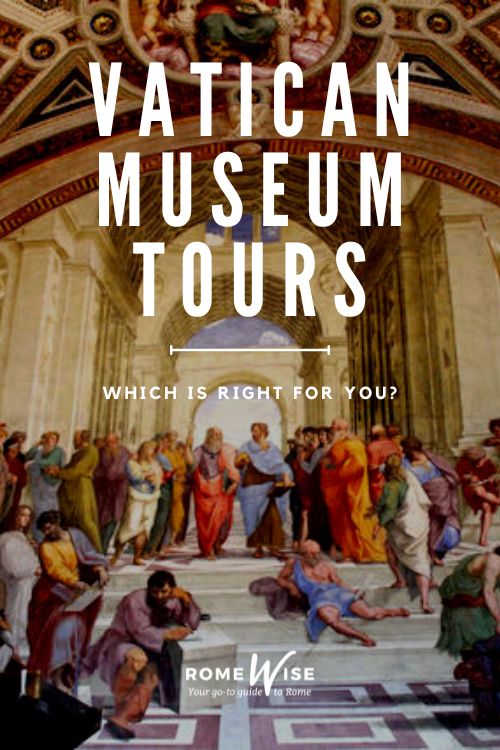
Get your 100% free Rome trip planner now!
Simply sign-up today for our free newsletter and get the Romewise Quick Start guide to Rome:
We are committed to respecting your data. Click for our Privacy Policy .
Comments? Questions? Suggestions?
Please come over to the private Romewise Facebook group and join in the conversation.
You will often find me there, happy to answer your questions / comments!
You will also meet other Rome lovers and experts, too.
What are you waiting for?
Come join in the fun !

Read here about our sponsorship policy
Top attractions and tours

- Colosseum - Don't miss visiting Rome's most iconic monument
- Vatican Museums - This is where the Sistine Chapel is
- Pantheon - Book ahead and skip the line
- Galleria Borghese - You'll need to book ahead for one of Rome's best museums
- Castel Sant'Angelo - See Rome's history through its architecture
- Rome City Pass - A great way to make your Rome visits easier
Disclosure : If you make a purchase through a link on this page, I may receive a small commission - at no extra cost to you. Thank you for supporting my site!
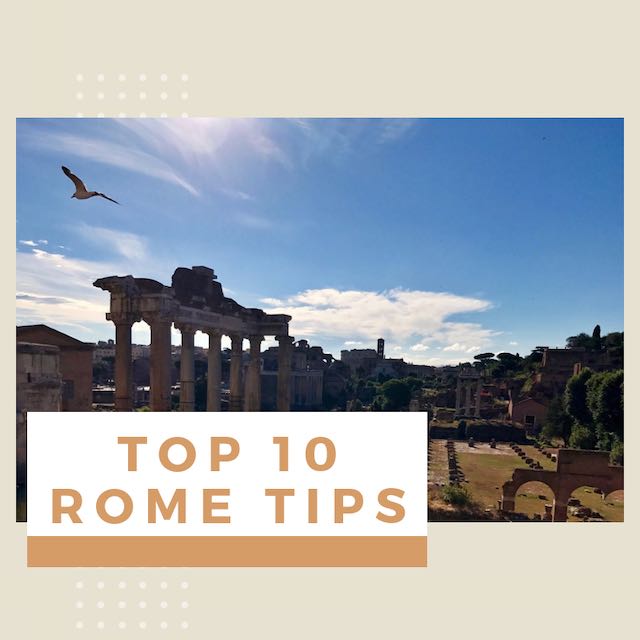
New to Romewise? Start Here
Get the most out of Romewise
Coming To Rome?
Weather in Rome
Accommodation
Already in Rome?
Things to Do
Home | About Me | Privacy Policy | Legal Disclaimer | Affiliate Disclosure | Contact Me
Copyright © 2009-2024 by Elyssa Bernard, Romewise.com | All Rights Reserved.
Vatican Museums
Where we are.
General information +39 06 69883145 [email protected] Office of the Directorate +39 06 69883332 [email protected]
Publications and Merchandising

Sculptures >

Publications >

Gift ideas >

Prints and Posters >

Accessories >

Home decor >
Follow us Menu

Social media
Support menu, patrons of the arts, choose your tour, aree tematiche, museums and vatican collections.
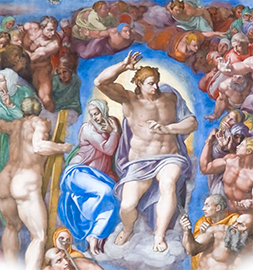
Vatican Gardens

Papal Palace & Secret Garden of Castel Gandolfo

Tour itineraries for
Schools – education.
Universities
Blind visitors
Deaf visitors
Search Menu
Advanced search.
- Peloponnese
- Greek Islands
- More Destinations
- Thessaloniki
- Castell de Castelldefels
- Castelldefels
- Liberty Island
- Washington D.C.
- SIngapore city
- Buddha Tooth Relic Temple
- Kristiansand
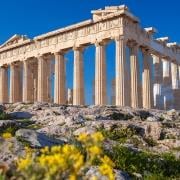
- Acropolis Hill
- Ancient Agora
- Acropolis Museum
- Temple of Olympian Zeus
- National Archaeological Museum
- Roman Agora
- Athens City Museum
- Athens Olympic Museum
- The National Garden
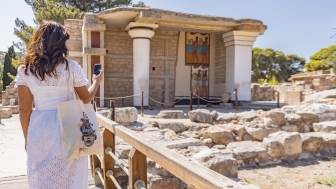
- Heraklion Archaeological Museum
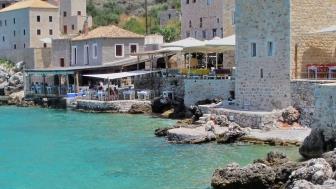
- Andritsaina
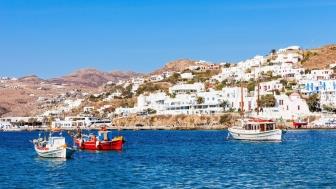
- Missolonghi
- Thermopylae
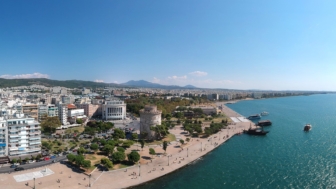
- Rhodes City Tours
- Grand Master Palace
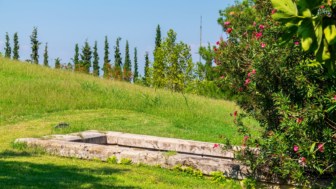
- The Colosseum
- The Roman Forum
- The Vatican City
- Castel Sant' Angelo
- Saint Peter's Basilica
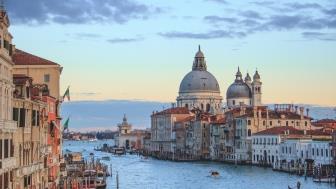
- Doge's Palace
- Saint Mark's Basilica

- Sempione Park
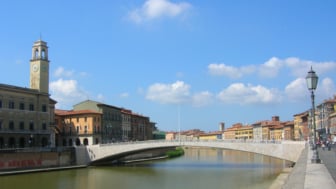
- The Tower of Pisa
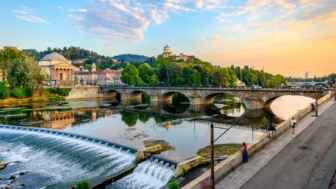
- The Red Light District
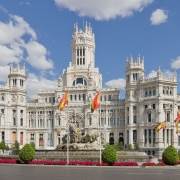
- The Alhambra Palace
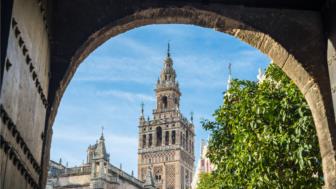
- Royal Alcazares
- The Seville Cathedral
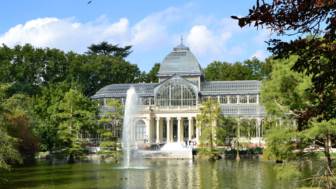
- Lázaro Galdiano Museum
- Archaeological Museum of Madrid
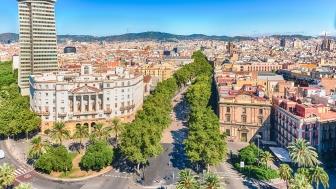
- Montjuïc Cable Car
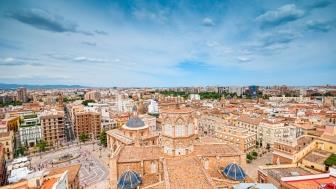
- The Mosque-Cathedral of Cordoba
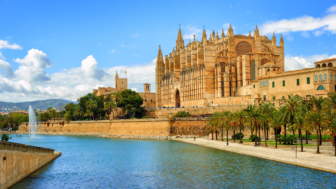
- The Mallorca Cathedral

- The Hagia Sophia
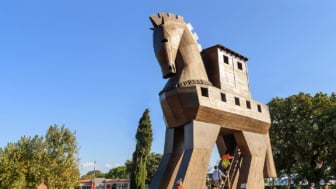
- Ephesus Ancient City Tour
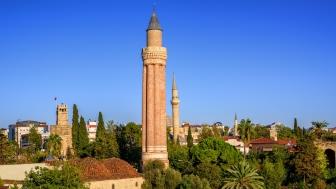
- Times Square
- Central Park
- Ellis Island & National Immigration Museum
- Niagara Falls
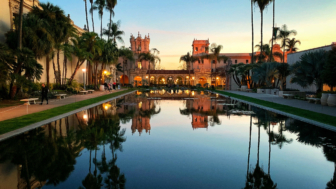
- Balboa Park

- Star Ferry Pier
- Victoria Peak
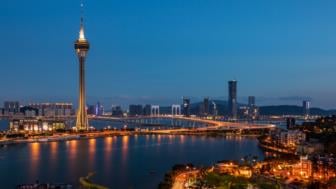
- Ruins of St. Paul
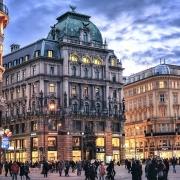
- Louvre Museum
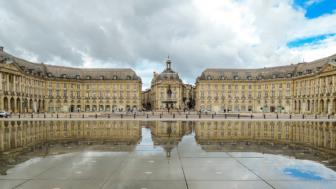
- Orange Roman Theatre & Museum
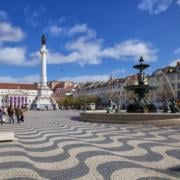
- St. George Castle
- Belem Tower
- Jerónimos Monastery
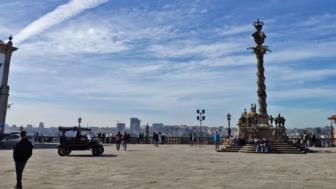
- Cathedral of Oporto
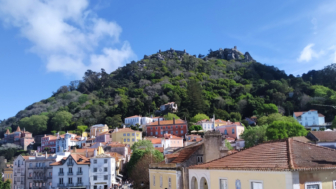
- Quinta da Regaleira
- The Pena Palace
- Moorish Castle
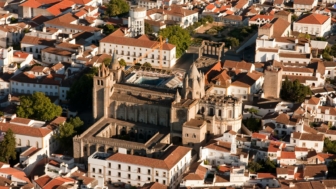
- Museu Nacional Frei Manuel do Cenáculo

- The Citadel of Qaitbay
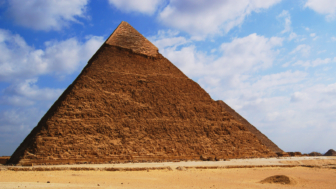
- The Hanging Church
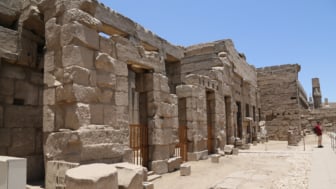
- Vajdahunyad Castle
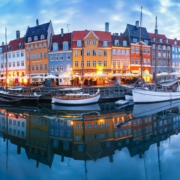
Inclusions and Exclusions
- The Location
Know before you book
Vatican self-guided virtual experience: the treasures of the vatican museums.
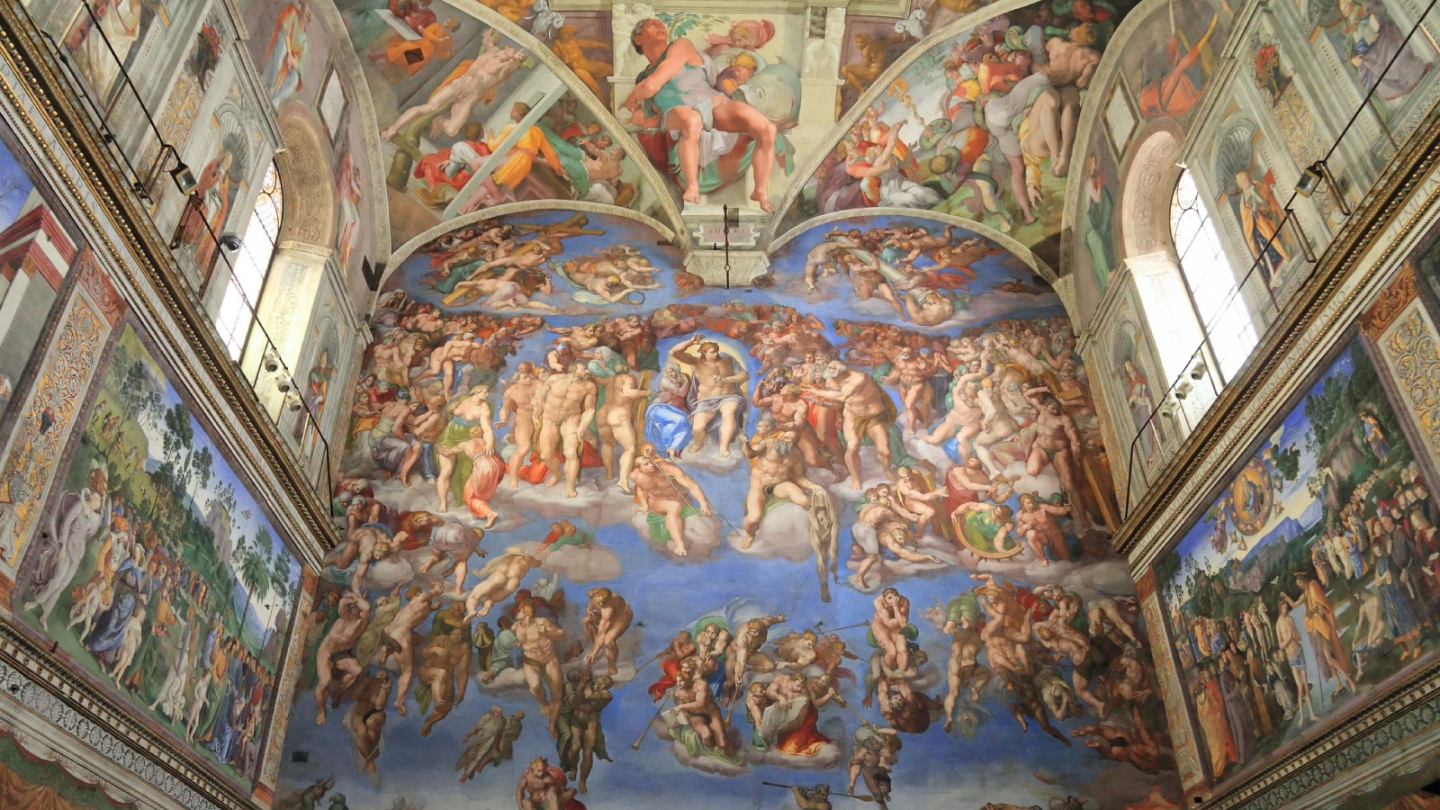
€ 14,99 per person
- Important Information
Experience the Vatican Museums from the comfort of your home with an engaging self-guided virtual tour narrated in English, from your PC or smartphone browser. It’s so simple! You will receive an email with the tour link and instructions, and in a couple of minutes, you will travel back in time and enjoy a virtual journey from the comfort of your couch!
Through the power of storytelling combined with street and satellite views, you will discover not only historical facts but also unknown stories and tales of ancient and modern times that will amaze your family and friends. The tour’s content is the result of in-depth research, squeezed into brief intriguing stories that will make your virtual visit both engaging and informative. The tour is only available online and you can access it repeatedly anytime.
This is an unmissable opportunity to gain valuable insights into treasures of the Vatican Museums and Sistine Chapel and immerse yourself in the surroundings/exhibits in an entirely innovative way.
The threshold into antiquity
Formerly adorning the Bishop’s Palace at Tivoli in Villa Adriana, these two statue-pillars were donated to Pope Pius VI in 1779 to be placed at the entrance way to his museum of ancient statues. The statues were made from red granite from Aswan in the 16th century. Their presence serves as a threshold between the age of Egyptian art and that of the first centuries after Christ. What’s more, the exhibits bear testimony to the “Egyptomania” that overcame Rome and many European travelers during the 18th century. This overwhelming desire to rediscover antiquity resulted in a renewed interest in archaeology. Systematic excavations were carried out, unearthing many of the pieces one sees today in the Pio Clementine Museum.

- Virtual Self-guided Tour for the Vatican Museums with satellite & street views
- Audio content with engaging & original stories in English
- Transportation
- Offline access
Mandatory items
- Desktop, laptop or smartphone device
- Internet connection
The location
Gallery of Maps: Holding your breath in awe, you’ll explore at your own pace the stunning Gallery of Maps as you listen to exciting stories about the world’s most precious collection of gigantic, geographical drawings.
Raphael’s Rooms: Raphael’s rooms are, naturally, among the highlights of the Vatican. As you admire the intricately detailed frescos of the Umbrian master, you’ll see major moments of religious history coming alive.
Sistine Chapel: You’ll enjoy a grand finale of the tour in the Sistine Chapel, one of the greatest treasures of world heritage. Michelangelo’s iconic chef-d’oeuvre “The Creation of Adam” will cast its timeless spell on you, as your audio tour immerses you in the secrets of a masterpiece that broke the conventions of Renaissance art.
Important information
- This is a virtual tour for the Vatican Museums that you can take from the comfort of your home and feel like you were there
- No live guide or meeting point required
- You will receive an email with instructions on how to access your tour via a link. Check your spam folder as well
- No special equipment is needed (i.e. special glasses)
- This product can be accessed from any web browser and requires internet connection
Cancellation Policy : This product cannot be refunded once activated.
There are no reviews yet.
Only logged in customers who have purchased this product may leave a review.
Other travelers also purchased
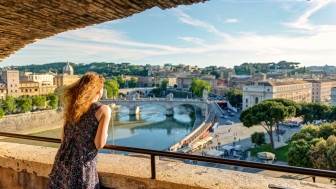
Castel Sant’ Angelo: E-Ticket with Audio Tour on Your Phone

Castel Sant'Angelo: a palimpsest of memories
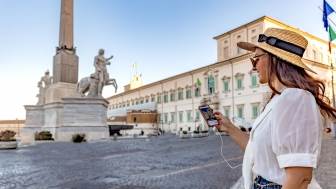
Rome city tour: Politics and Roman holidays
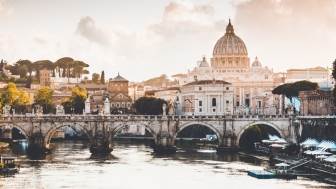
St. Peter’s Basilica: The Holiest Site of Rome

The Colosseum: Bread and Games
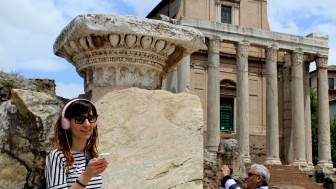
The Roman Forum: The Beating Heart Of The Empire

The Treasures of the Vatican Museums
€ 11,99
Privacy Overview
Moscow Metro Tour
- Page active

Description
Moscow metro private tours.
- 2-hour tour $87: 10 Must-See Moscow Metro stations with hotel pick-up and drop-off
- 3-hour tour $137: 20 Must-See Moscow Metro stations with Russian lunch in beautifully-decorated Metro Diner + hotel pick-up and drop off.
- Metro pass is included in the price of both tours.
Highlight of Metro Tour
- Visit 10 must-see stations of Moscow metro on 2-hr tour and 20 Metro stations on 3-hr tour, including grand Komsomolskaya station with its distinctive Baroque décor, aristocratic Mayakovskaya station with Soviet mosaics, legendary Revolution Square station with 72 bronze sculptures and more!
- Explore Museum of Moscow Metro and learn a ton of technical and historical facts;
- Listen to the secrets about the Metro-2, a secret line supposedly used by the government and KGB;
- Experience a selection of most striking features of Moscow Metro hidden from most tourists and even locals;
- Discover the underground treasure of Russian Soviet past – from mosaics to bronzes, paintings, marble arches, stained glass and even paleontological elements;
- Learn fun stories and myths about Coffee Ring, Zodiac signs of Moscow Metro and more;
- Admire Soviet-era architecture of pre- and post- World War II perious;
- Enjoy panoramic views of Sparrow Hills from Luzhniki Metro Bridge – MetroMost, the only station of Moscow Metro located over water and the highest station above ground level;
- If lucky, catch a unique «Aquarelle Train» – a wheeled picture gallery, brightly painted with images of peony, chrysanthemums, daisies, sunflowers and each car unit is unique;
- Become an expert at navigating the legendary Moscow Metro system;
- Have fun time with a very friendly local;
- + Atmospheric Metro lunch in Moscow’s the only Metro Diner (included in a 3-hr tour)
Hotel Pick-up
Metro stations:.
Komsomolskaya
Novoslobodskaya
Prospekt Mira
Belorusskaya
Mayakovskaya
Novokuznetskaya
Revolution Square
Sparrow Hills
+ for 3-hour tour
Victory Park
Slavic Boulevard
Vystavochnaya
Dostoevskaya
Elektrozavodskaya
Partizanskaya
Museum of Moscow Metro
- Drop-off at your hotel, Novodevichy Convent, Sparrow Hills or any place you wish
- + Russian lunch in Metro Diner with artistic metro-style interior for 3-hour tour
Fun facts from our Moscow Metro Tours:
From the very first days of its existence, the Moscow Metro was the object of civil defense, used as a bomb shelter, and designed as a defense for a possible attack on the Soviet Union.
At a depth of 50 to 120 meters lies the second, the coded system of Metro-2 of Moscow subway, which is equipped with everything you need, from food storage to the nuclear button.
According to some sources, the total length of Metro-2 reaches over 150 kilometers.
The Museum was opened on Sportivnaya metro station on November 6, 1967. It features the most interesting models of trains and stations.
Coffee Ring
The first scheme of Moscow Metro looked like a bunch of separate lines. Listen to a myth about Joseph Stalin and the main brown line of Moscow Metro.
Zodiac Metro
According to some astrologers, each of the 12 stops of the Moscow Ring Line corresponds to a particular sign of the zodiac and divides the city into astrological sector.
Astrologers believe that being in a particular zadiac sector of Moscow for a long time, you attract certain energy and events into your life.
Paleontological finds
Red marble walls of some of the Metro stations hide in themselves petrified inhabitants of ancient seas. Try and find some!
- Every day each car in Moscow metro passes more than 600 km, which is the distance from Moscow to St. Petersburg.
- Moscow subway system is the 5th in the intensity of use (after the subways of Beijing, Tokyo, Seoul and Shanghai).
- The interval in the movement of trains in rush hour is 90 seconds .
What you get:
- + A friend in Moscow.
- + Private & customized Moscow tour.
- + An exciting pastime, not just boring history lessons.
- + An authentic experience of local life.
- + Flexibility during the walking tour: changes can be made at any time to suit individual preferences.
- + Amazing deals for breakfast, lunch, and dinner in the very best cafes & restaurants. Discounts on weekdays (Mon-Fri).
- + A photo session amongst spectacular Moscow scenery that can be treasured for a lifetime.
- + Good value for souvenirs, taxis, and hotels.
- + Expert advice on what to do, where to go, and how to make the most of your time in Moscow.
Write your review

IMAGES
VIDEO
COMMENTS
How to Visit Vatican Museum: self guided walking tour - Main Floor Attractions. 1. Vatican Museum: Pinacoteca Gallery of Paintings. This is the first stop in the Vatican Self guided tour. The gallery was opened in 1932, it has some of the finest paintings in the Vatican.
Whether you're looking for a way to keep your kids occupied or simply want to get your culture fix in a safe environment, begin your journey by reserving a ticket with us; enjoy a tour of the Vatican's most popular attractions, including museums, the Sistine Chapel, and more.
Free entry - Possibility of guided tours upon reservation. Days & Hours of closure > Navigazione info. Vatican Museums Openings/Closures 2024; Openings/Closures Papal Palace of Castel Gandolfo 2024; Calendar of Events; Where we are Viale Vaticano, 00165 Rome
SELF-GUIDED TOUR OF VATICAN CITY. Vatican City is the world's smallest nation-state. Vatican City spans 106 acres and is surrounded by a two-mile border and it became its sovereign nation in 1929. Its building began back in the 4th Century, AD. It's situated on a large graveyard and features a maze of secret tunnels.
Everything you need to know before visiting Rome. Vatican Museums on the cheap. The absolute cheapest route is booking admission tickets directly (do it well in advance, up to 60 days), which nets you an unprecedented laundry list of world-class art for less than the price of a gourmet pizza back home (adult/reduced €17/€8 plus a €4 reservation fee and optional audio guide €7).
The Sum Up. Enjoy the wonders of the Vatican Museums and Sistine Chapel with this self-guided virtual tour. Explore at your own pace, uncovering the rich history and breathtaking artistry of these iconic landmarks. With insightful audio commentary and no need for a meeting point, this experience offers a unique opportunity to discover the ...
After you enter the Museum, at the top of the last escalator, turn RIGHT instead of left (don't follow the crowd who will be going left) to go the Vatican Pinacoteca - Gallery of the Old Masters ...
Discover the art collection inside the Vatican Museums on a tour with an art historian guide, with an optional entry to Castle Gandolfo. Walk through the galleries and admire masterpieces by Michelangelo inside the Sistine Chapel. ... €8.50 - Self-Guided Tour of the Vatican area in Rome: €3.50 ...
Vatican Museums: Full Day self-guided tour with Audio Guide 1) Slideshow with music: First 28 minutes2) Short videos with audio guide narrator or music: Last...
4152 posts. 1) The Vatican museums are well signed. You could do a self guided tour or rent an audio guide. The official guided tour will take you to the most popular rooms and last 2-3 hours depending on the tour you choose. If you only have a few hours and want to get the most information in the shortest time a guided tour is the way to go.
The Vatican is typically one of the busier Italian tourist destinations, but you can enjoy it in peace—without the throngs of visitors—with this immersive virtual tour. On your self-guided experience, you can see more from the comfort of home, including the Sistine Chapel and the Vatican Museums. Enjoy different digital views, listen to audio commentary, and visit dozens of points of ...
The Vatican City. The Treasures of the Vatican Museums. Audio Tours. 3.7/5(3) € 11,99 per person. Self-guided audio tour. Follow the story at your own pace. English, Deutsch, Italiano. For both audio and stories included.
Our Vatican Museum audio guide tour allows you to dive into the history of this important religious venue located in the heart of Vatican City. Across 42,000 meters, the museums are home to over 70,000 exhibits, including some of the world's most important Roman sculptures and Renaissance masterpieces. It is also home to the Sistine Chapel ...
This Vatican Museums Skip-the-Line Tour is a great choice for first-time visitors and travelers that prefer to bypass the long lines that the Vatican can attract. Skip the entrance lines with your tour group and then explore the highlights of the museums, including the Sistine Chapel and Raphael's Rooms, with a guide leading the way. Plus, this tour also gives you skip-the-line access to St ...
N.B.: If you wish to combine free admission to the Papal Palace with a guided tour, please write in advance to [email protected]. Full entry ticket - € 20.00 (without online booking) Reduced entry ticket - € 8.00 (without online booking) € 8.00 + 5.00 (with "Skip the Line" booking on the official Vatican Museums website)
St Peter's Basilica Shortcut. You can only take the shortcut from the Sistine Chapel to St Peter's Basilica if you are on a tour that INCLUDES the basilica. The shortcut is open from 9:30 am - 5 or 5:30PM, and it's ONLY accessible to tour companies or private guides that you book OUTSIDE the Vatican Museums website.
Free entry - Possibility of guided tours upon reservation. ... Vatican Museums Openings/Closures 2024; Openings/Closures Papal Palace of Castel Gandolfo 2024; Calendar of Events; Where we are Viale Vaticano, 00165 Rome. Getting Here > Contact. General information +39 06 69883145 [email protected]
Vatican Museums. Visit, Self-guided tour. Sistine Chapel. Self-guided tour. Main stop. For reference only. Itineraries are subject to change. ... Explore the Vatican Museums and the Sistine Chapel with a pre-reserved entry ticket. Discover one of the most extensive art collections in the world, featuring masterpieces from various periods and ...
Experience the Vatican Museums from the comfort of your home with an engaging self-guided virtual tour narrated in English, from your PC or smartphone browser. It's so simple! You will receive an email with the tour link and instructions, and in a couple of minutes, you will travel back in time and enjoy a virtual journey from the comfort of ...
Moscow Metro private tours. 2-hour tour $87: 10 Must-See Moscow Metro stations with hotel pick-up and drop-off. 3-hour tour $137: 20 Must-See Moscow Metro stations with Russian lunch in beautifully-decorated Metro Diner + hotel pick-up and drop off. Metro pass is included in the price of both tours.
Private and Luxury in Moscow: Check out 17 reviews and photos of Viator's Private Guided Moscow Underground Palaces Metro Tour
Moscow is home to some extravagant metro stations and this 1.5-hour private tour explores the best of them. Sometimes considered to be underground "palaces" these grandiose stations feature marble columns, beautiful designs, and fancy chandeliers. Visit a handful of stations including the UNESCO-listed Mayakovskaya designed in the Stalinist architecture. Learn about the history of the ...
The Moscow Metro is one of the oldest in the world, as well as one of the most beautiful. As a visitor, it can be tricky to know which stations are must-sees, but this guided tour ensures that you see the best. Also, because it's a private tour, you don't need to feel self-conscious of being in a large tour group getting in commuters' way.